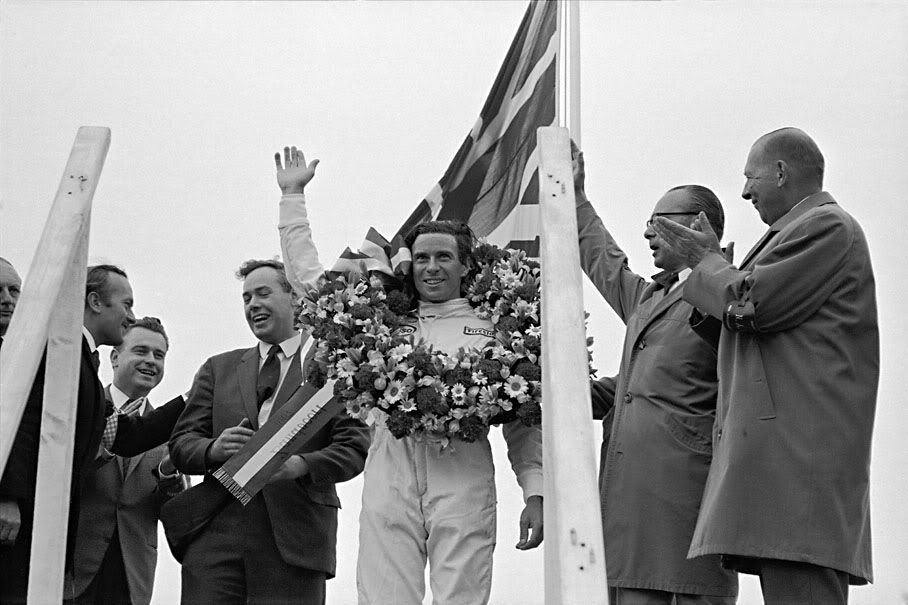You are using an out of date browser. It may not display this or other websites correctly.
You should upgrade or use an alternative browser.
You should upgrade or use an alternative browser.
The Formula One topic
- Thread starter DangerousK
- Start date
- Joined
- Jan 24, 2001
- Posts
- 9,350
I could imagine a whole lot of sandbagging taking place at those test days.
I wouldn't be surprised if that is the case. Most of the top teams have specific things they are looking to test whether it is aerodynamics or gearing or something else...so the focus is going to be on getting the most data possible that can help them set their cars up going into Australia next month. Ferrari already stated at the Jerez testing that they had a number of things to work out on their car. I just hope in their case that whatever they need to work out will help them challenge better than they did last season.
Edit: Also forgot a lot of the teams spend time trying to hide different engineering aspects from other teams to maintain a competitive advantage. So I wouldn't be surprised to see possible chassis changes when everyone shows up for Australia. Maybe different front wings or reworked sidepods.
Last edited:
- Joined
- Jan 24, 2001
- Posts
- 9,350
Day 3 of Circuit de Catalunya testing times...
1 Pastor Maldonado Williams-Renault FW34 1’22.391 106
2 Michael Schumacher Mercedes W03 1’23.384 127 0.993
3 Kamui Kobayashi Sauber-Ferrari C31 1’23.582 99 1.191
4 Jenson Button McLaren-Mercedes MP4-27 1’23.918 114 1.527
5 Jean-Eric Vergne Toro Rosso-Ferrari STR7 1’24.433 78 2.042
6 Mark Webber Red Bull-Renault RB8 1’24.771 97 2.380
7 Felipe Massa Ferrari F2012 1’24.771 84 2.380
8 Paul di Resta Force India-Mercedes VJM05 1’25.646 83 3.255
9 Timo Glock Marussia-Cosworth MVR-02 1’26.173 108 3.782
10 Vitaly Petrov Caterham-Renault CT01 1’26.448 70 4.057
Maldonado certainly drove his ass off today. I still am going to be curious to see if the Williams FW34 is a viable car that might be able to challenge the top of the grid, or just another midfield car. Still leaning towards it being midfield at best.
1 Pastor Maldonado Williams-Renault FW34 1’22.391 106
2 Michael Schumacher Mercedes W03 1’23.384 127 0.993
3 Kamui Kobayashi Sauber-Ferrari C31 1’23.582 99 1.191
4 Jenson Button McLaren-Mercedes MP4-27 1’23.918 114 1.527
5 Jean-Eric Vergne Toro Rosso-Ferrari STR7 1’24.433 78 2.042
6 Mark Webber Red Bull-Renault RB8 1’24.771 97 2.380
7 Felipe Massa Ferrari F2012 1’24.771 84 2.380
8 Paul di Resta Force India-Mercedes VJM05 1’25.646 83 3.255
9 Timo Glock Marussia-Cosworth MVR-02 1’26.173 108 3.782
10 Vitaly Petrov Caterham-Renault CT01 1’26.448 70 4.057
Maldonado certainly drove his ass off today. I still am going to be curious to see if the Williams FW34 is a viable car that might be able to challenge the top of the grid, or just another midfield car. Still leaning towards it being midfield at best.
- Joined
- Jan 24, 2001
- Posts
- 9,350
This is a long read, but would likely be informative for fans who aren't fully aware of the circumstances regarding the 1994 season, and the cheating Benetton team that won the World Championship that year. They never should have won it, in fact they should have been kicked out. It didn't happen due to rampant corruption in FIA. (This will be over a few posts...it's very long)
BusinessF1 Magazine LTD.
Unmasking the President
In the early evening of Tuesday 6th September 1994 Max Mosley, the president of the Fédération Internationale de l'Automobile, stepped over the mark of probity. He effectively 'fixed' the outcome of an FIA World Council disciplinary hearing. Mosley may have felt he was safe to do so and justified it by 'it being in the best interests of the sport'. Only he knew everything that had been done to prevent the certainty of the Benetton team being excluded from the 1994 world championship for blatant cheating and endangering its mechanics' safety. But one other man also knew: George Carman QC, without whom his 'fix' could not have worked.
By Christian Sylt
Ten days before he died, on Christmas Eve 2000, George Carman, Britain's greatest ever QC, handed his son Dominic a watch. Carman, who knew he was dying, said: "I want you to have this. Take it.” Inscribed on its round white face were the words 'Sword of Truth' and the date 20th June 1997. The watch had been a present from The Guardian newspaper to celebrate its libel victory over British Conservative politician Jonathan Aitken. It was accompanied by a simple request: "I'm not going to be able to do it. You'd better have a go.” Carman was acknowledging that his planned autobiography was now beyond him and he was asking his son to write it in his place. Carman had spent the previous year anticipating this day and recounted to his son everything significant that had happened in his life. The talk was to have severe repercussions. Suddenly all the attorney/client privilege that FIA president Max Mosley had been relying on to protect him was lost. A time bomb was ticking.
On the evening of Tuesday 6th September 1994, Max Mosley, the president of the Fédération Internationale de 1'Automobile, strolled out of his Paris headquarters on the Place de la Concorde into the impressive portals of the building next door, one of the most famous hotels in the world, Hotel Crillon.
Mosley had arrived in Paris a few hours before aboard Bernie Ecclestone's Learjet. Ecclestone, president of Formula One Management, the commercial rights holder of Formula One, and a member of the FIA World Council was also due in Paris for the meeting and the two men travelled together.
Ecclestone and Mosley had discussed the upcoming World Council disciplinary hearing, which had been brought forward five weeks. Although there were two other disciplinary hearings on the cobbled-together disciplinary agenda, the only one that mattered was the one that concerned the Benetton team's absence of a fuel filter from its refuelling rig at the German Grand Prix at Hockenheim in July. The other two were sideshows.
Ecclestone, an extraordinary visionary in these situations, was desperately worried that Benetton's German driver Michael Schumacher could be excluded from the 1994 championship because of his team's actions. That would be a disaster. German television figures were rising, as was sponsorship interest from Germany in the sport. Ecclestone knew the reunited country was a potential powerhouse for Formula One.
Aside from his nationality, Schumacher was the new star of Fl, to fill the gap left by the dead Ayrton Senna. In Ecclestone's view his expulsion had to be avoided at all costs.
Ecclestone has since admitted that he put pressure on Mosley for that not to happen. In fact, he has tried to take the blame for what happened. But in fact Mosley was under pressure from all sides, including Italian entrepreneur, Luciano Benetton, the owner of the team, colourful team principal Flavio Briatore, who had breezed into Formula One a few years before, and Tom Walkinshaw, the team's technical director. Mosley was particularly upset by Walkinshaw's attitude. In his opinion it was he who had removed the filter and caused all the problems and then, even worse, had forgotten he had done it and got caught.
Benetton had been caught red-handed after the fuel rig had caught fire, directly because the filter had been removed, during a pitstop by its Dutch driver Jos Verstappen. The incident was dramatically caught on television, making headlines throughout the world. Worse, the team had three times changed its explanation of its actions. First it said it had the FIA's permission, then it said it had Intertechnique's, the rig manufacturer's permission, and lastly it said the filter had been removed by a junior employee without the knowledge of the team's senior managers. It had also tried to discredit the FIA's technical expertise by commissioning a dubious safety report of its own which, surprise, surprise, completely exonerated the team.
It was a disastrous situation, and Mosley realised the World Council would vote Benetton out of the championship unless he could intervene. Mosley knew the team was guilty but he had a plan and as long as he could persuade Benetton's lawyer to go along with it, it just might work. Mosley was not looking forward to the next few weeks. He knew that even if he won he would have to face the press, which although tame would not stand for what was about to happen. He would need all his powers of persuasion to get through.
Waiting in the hotel bar for him was George Carman QC, the most famous brief in England. Carman was staying the night in the Crillon with his junior. Although primarily a libel barrister, Carman often did private work on tricky and difficult quasi legal hearings as well as licensing work and criminal work for people who could afford him. Particularly lucrative was chancery and commercial work. For instance he had acted for Kevin and Ian Maxwell when they were called before a parliamentary hearing. In fact, he did anything that required good advocacy and where money was at stake.
Carman had an expensive lifestyle to support and liked to gamble for leisure. It cost him over a US$1 million to live and he was chief breadwinner for his chambers, New Court, and 25 other barristers of lesser skill. Private work paid well and his few days on the Benetton case delivered a fee north of US$100,000. He was worth it. There was only one other comparable brief in the world, Los Angeles entertainment lawyer Bert Fields. Carman had worked with Fields once when the London Daily Express newspaper had claimed actor Tom Cruise was gay. Together they had decimated the Daily Express legal team before even entering the court. He was glad Fields was not a direct competitor and operated a long way away.
Carman had been hired by Benetton team boss, Flavio Briatore, via the London office of Benetton's Italian lawyers. It was probably Ecclestone's idea to hire him. He had come across him before and instantly recognised a fellow genius.
Almost straight away Carman realised it was a hopeless case, but he had won plenty of them before. One of his strengths was being able instinctively to tell if he was being lied to, especially by his own clients. He knew Briatore and Walkinshaw were lying and he could also see they had convinced the rest of the Benetton team that they were innocent. Carman was astonishingly astute, as his son confirms: "One of the great things about my father was his preparation. I don't mean just reading the brief but actually chatting to witnesses. If he thought they were no bloody good, he'd keep them in the witness box for three minutes and boot them out, but if he thought they were really useful, he'd test them beforehand, do his homework.”
Formula One in 1994 had been a season of crookery as the Benetton Ford team took advantage of a Williams Renault team devastated by the loss of Ayrton Senna and a hopelessly uncompetitive McLaren team. All the FIA's attention had turned to making the cars and tracks safer in the wake of Senna's death. Added to that, refuelling had been reintroduced, with all the attendant hazards. Whilst no one was looking, Benetton had tried everything — launch control, traction control, flexible bodywork, lower ride height and special fuels, all of which were outlawed. One former Benetton mechanic, who now works at Williams, quipped: "The only thing we didn't have on the car was cruise control.”
But with the fuel rig, Carman's client had been caught red-handed in the worst of circumstances, changed its story three times and upset the FIA. His defence was limited to say the least He thought of pleading guilty but that appeared impossible. Clients didn't hire George Carman to represent them and then plead guilty. All he could do was argue an ignorance defence. But in his heart he knew it was hopeless and had already rehearsed in his mind a speech of mitigation.
In his usual style, Carman immersed himself in the case, learning as much as he could about Formula One, including a visit to his client's premises at Enstone in Oxfordshire. He was trying to find a loophole. He found none. After that he decided to rely on his own advocacy to defend his client and planned only to have Ross Brawn testify for the team. He knew Briatore and Walkinshaw would make very poor witnesses.
Carman had been surprised when Max Mosley asked if they could meet for a drink the night before the hearing. He knew who Mosley was, knew people who had known his father. But he wasn't sure of his role in the hearings. He thought Mosley was effectively the judge, and to meet the judge the night before and discuss a case would be totally out of order in a court of law. It was barely acceptable in this case, but Carman had little to lose and went along with it. He had little idea of Formula One's disciplinary procedures and found them rather ad hoc.
When Mosley arrived for their evening meeting, Carman was surprised, but not displeased, to find Bernie Ecclestone in tow. Carman was already sipping his normal pre dinner glass of white wine. Mosley ordered a drink and Ecclestone took a beer. Dominic Carman confirms: "My father spent an hour or two with him (Mosley) chatting and getting the measure of him and where he may be receptive and where he may not be receptive or how strict the FIA were going to be. Whether they really wanted to find a way out, as is often the case, want to find a compromise. He found they wanted to rap the knuckles the proper way if necessary but only as far as is necessary and not further'
Carman adds: "He found them both fascinating people, both highly intelligent, but chalk and cheese. My father said that Ecclestone was very cunning, very capable and Mosley very suave."
Ecclestone was there because he was unashamedly lobbying for Benetton to be let off so Michael Schumacher could take the championship. He wanted to give Carman all the help he could, although technically he was out of order as he was a member of the following day's jury But he was hardly going to be prejudiced: his vote was already cast. Mosley's role at the following day's hearing was more formal. He was effectively both the judge and a member of the jury. When the evidence had been heard he would sum up for the jury, members of the World Council. But effectively the World Council, with very little knowledge of the affair, would be heavily influenced by what Mosley said in his summing up. In fact, they would almost certainly follow what he said, particularly as Mosley had it in mind that they would not get to hear any evidence. But it all had at least to make the minimum of sense, most of all to the media who would almost certainly be hostile to any decision to let Benetton off.
Mosley had decided his strategy. He would ask Carman to plead guilty and argue his case in mitigation as to why Benetton should escape punishment, and hope the World Council would then decide there should be no punishment. He would amplify everything Carman said in his summing up, in his usual rational, persuasive way.
This is made clear in the fact that, although a disciplinary hearing, the FIA's lawyer, Ian Titchmarsh, had effectively prepared no prosecution case. He had been given the minimum of briefings and was shocked to hear there were no prosecution witnesses present. Mosley, knowing in advance the prosecution strategy and the result of the hearing, had seen no reason to trouble the chief prosecution witnesses, the FIA's technical staff and executives of Intertechnique to make a trip he knew would be wasted. It was an extraordinary decision and effectively proved his complicity in the affair. Amazingly, he later turned this to his advantage, explaining to journalists that one of the reasons Benetton could not be punished was because the Intertechnique witnesses could not be questioned. Unfortunately, the journalists hadn't the wit to ask him why not. FIA technical delegate Charlie Whiting was one potential witness who must have been bemused that he wasn't called to give evidence. Whiting refuses to make any comment.
Carman chuckled to himself as he sipped his wine. When his clients were found guilty, he expected a punishment that his mitigation was to reduce. This time he was being told to argue for no punishment at all — and there would be no punishment. Carman thought to himself "This is all a bit of a set-up.” But seeing that Mosley was president of the FIA and that his client's case was hopeless he had no choice but to agree. Dominic Carman says: "My father told me that the essential message that came across was that for all of Mosley's intelligence and integrity, there was nevertheless part of him that was an agent to Ecclestone. By set-up he meant they were trying every conceivable way to finesse it so they were seen to be doing the right thing, but nevertheless not disrupting the sport.”
Mosley told Carman the guilty plea would effectively mean the case was not heard, no witnesses would be called and the HA World Council would only hear what Carman told them. It was down to Carman's skill to convince the World Council that it was an innocent 'mistake' for which there was no need to exact a punishment. This would be reinforced by Mosley's summing up, which would take the view that it was unfortunate that Carman had pleaded guilty because the World Council was not able to hear all the facts. As Mosley well knew, Carman was the world's best advocate, and he believed he was pretty good himself. As he predicted, the World Council would be dazzled and produce the required verdict, guilty but innocent.
The meeting ended with Carman telling Mosley that he would do as he said and that his mitigation strategy would be to get Benetton off with a 'rap on the knuckles' and he said there was a 'window of evidence' for when this could be achieved.
After Mosley and Ecclestone left, Carman felt he had to deliver what Mosley wanted. He was being paid handsomely and it was his job to win the best result for his client as long as his ethics weren't compromised. Losing could potentially have had a very significant effect on Benetton as it was leading the constructors' championship and would be banned from competing for the rest of the year. An enormous amount of money was at stake.
- Joined
- Jan 24, 2001
- Posts
- 9,350
Part 2...
After all, this was a private hearing. The normal rules did not apply. Dominic Carman recalls: "The FIA World Council is not a court in the conventional sense, they make their own rules, but I think they generally follow the principles of English law and what you might call protecting unfairness. At least that's what my father said.”
Mosley left the Crillon to return to his office and finalise arrangements for the following day. It was something he could have done without, and but for a hot exhaust and a stray spark he might not have had to
The flash fire that engulfed the Benetton Ford pit at Hockenheim on 31st July 1994, when Jos Verstappen made his pitstop at the end of lap 15 of the German Grand Prix, produced some spectacular images, and left six mechanics injured. It made front page news and led television news reports worldwide. But what in reality was a minor, if dramatic looking, drama, set off a chain of events that would directly affect the outcome of the Formula One world championship that year, via an FIA World Council disciplinary hearing.
The FIA launched an inquiry into what it initially thought was a straightforward accident inquiry but as the investigation proceeded it got more than it bargained for.
The incident is still red raw at the FIA and Charlie Whiting, the highest ranking technical executive in the sport, absolutely refuses to answer any questions about the affair Or at least he has been ordered to make no comment. Unsurprisingly, the accident investigation brought the discovery that the Benetton team had been cheating by removing filter parts, with the result that fuel would flow 12.5 per cent more quickly through the hose, increasing the speed of pitstops. For a team that had repeatedly been under suspicion during the year for cheating, it should have been the last straw. After an 11-year absence on safety grounds, refuelling had been reintroduced to the sport only at the beginning of the year and was a contentious issue. And the FIA had to be seen to be making every possible effort on safety issues.
The immediate concerns were obvious, as then Benetton technical director Ross Brawn commented: "The worrying thing is that between two and six litres were spilt in the accident, and when you consider that we're putting 70-120 litres into the car and it is coming out at 13-14 litres per second, you can see that if there was just a second or two of spillage there would be a serious problem."
The day after the accident, on the morning of Monday 1st August, the FIA announced its own investigation. Benetton also said it would be commissioning an independent investigation. Brawn contacted a small company called Accident and Failure Technical Analysis Ltd (AFTA), run by Peter Coombs and Tony Neville. The French fuel rig manufacturer, Intertechnique, was due to meet Benetton on the Wednesday after the Grand Prix. So far, this was a straightforward accident investigation, with the main concern being legal claims threatened by the injured mechanics who sensed a payday from Benetton's insurers. Some of the mechanics were quite badly injured and that was covered up. But Benetton had made a huge mistake.
Crucially it had forgotten, or Ross Brawn didn't know, that it had removed the filter in the rig earlier in the season.
It was not until 10 days after the accident that the bombshell dropped: Intertechnique's report submitted to the FIA found the most likely cause of the accident was deliberate removal of the filter, an action that increased fuel flow by 12.5 per cent, which could have translated into a gain of one second over an eight-second pitstop. The FIA's regulations expressly forbid any modification of Intertechnique's equipment, Article 6.5.1. stating that the 'equipment must not be modified in any way whatsoever'.
Suddenly the investigation had dramatically changed from a safety issue to a cheating issue. Safety was containable, cheating which compromised safety, was not, especially when lawyers, insurance companies and the outcome of the world championship were concerned.
The FIA's press release read: "Following a detailed investigation into the fire involving car No. 6 during a pitstop at the German Grand Prix, the refuelling equipment manufacturer, Intertechnique, has reported to the FIA as follows:
"1. The fuel spillage was caused by a valve failing to close properly,
"2. The valve was slow to close due to the presence of a foreign body,
"3. The foreign body is believed to have reached the valve because a filter designed to eliminate this risk had been deliberately removed.
"A report has been submitted by the FIA Observer, Mr R. Causo, under Article 152 of the International Sporting Code and Benetton Formula Ltd. has been summoned to appear before the World Motor Sport Council on 19th October, 1994 to answer a charge that they are in breach of Article 6.5.1 of the FIA Formula One Technical Regulations."
It was a sensation.
Benetton had been accused of cheating before that season but this time there were rumours the punishment would be expulsion from the world championship. Furthermore, the accusation that Benetton's actions had put its own team members in danger was potentially more damning, especially if the mechanics sued. Benetton had little choice but to issue its own statement before the end of the day with some of the findings from the independent report it had commissioned. At first Benetton declined to reveal the identity of the accident investigation company it had employed, calling it 'a specialist in the field of accident investigation and assessment of engineering failures and accidents, particularly specialising in the aerospace field'. It also failed to explain how an aerospace company could have as much background knowledge about the incident as the FIA Safety Commission.
The truth about Accident and Failure Technical Analysis Ltd (AFTA), based in Camberley in Surrey, was somewhat different. The statement said the company had 'conducted investigations into over 300 serious accidents worldwide, in addition to numerous less serious cases, including involvement in most major accidents since 1972 to public transport aircraft and helicopters in the UK and surrounding waters, as well as overseas incidents where aircraft of UK registration or manufacture have been involved'. Benetton also said AFTA had frequently served as technical investigator for military boards of inquiry into serious and complex military aircraft accidents.
But Benetton's description of AFTA was entirely false. It had not existed in 1972 and was only incorporated in 1989; it had only investigated a few accidents and its turnover was tiny. It had only three employees, two of whom were the directors Tony Neville and Peter Coombs, plus a secretary, believed to be one of their wives. By 2001 its accounts revealed it was virtually dormant. Today the company is run from one of the director's homes and does little if any business. Detailed searches of accident databases reveal no significant accidents that AFTA or its directors investigated. At the time, no one questioned Benetton's description of AFTA.
The press release, which even kindly can only be described as a blatant lie, was written by Patrizia Spinelli, Benetton's longtime press officer and a close associate of Flavio Briatore. Spinelli was extraordinarily evasive when contacted and asked why she had written a totally misleading press release. She said: "I do not wish to talk about that incident." In fact the release was a sham.
Peter Coombs confirms this and has no idea why Benetton described his company as it did. He confirmed he was first contacted by Ross Brawn and that he was surprised because AFTA and its directors had no experience of motor racing accidents.
Now it appears AFTA — with no experience to base an opinion on — merely transcribed what it was told by Benetton personnel Coombs said: "We were contacted out of the blue by Ross Brawn. I have no idea why."
The Benetton statement went on to quote part of the report that explained that the filter had indeed been removed deliberately by the team, but this was because Benetton had ceased to have problems with debris collecting in the rig owing to the team's fastidious maintenance of the rig. It claimed there was no evidence from the rig that debris had fouled any of the moving parts. The statement went on to say Benetton had lodged the AFTA report with its legal advisers, Marriott Harrison of London, and urgently requested a meeting with the FIA.
Time and again Benetton and Spinelli quoted the AFTA report as justification of Benetton's innocence. Spinelli also used it in an internal communication at Benetton to put employees concerned about their own reputations at ease. The Benetton staff were fed up that the team had been brought into disrepute. Spinelli convinced them with AFTA's report that Benetton was in the right. As a result, Benetton's mechanics defended the company, including Steve Matchett, in his best-selling book 'Life in the Fast Lane'. Matchett might not have been so supportive had he known what Spinelli had written was not the truth. Equally, the FIA seems to have taken AFTA's credentials at face value. With her inaccurate description of AFTA's credentials, Spinelli had conned her colleagues into believing everything was all right.
Meanwhile, Coombs met Charlie Whiting to discuss the report. Whiting did not question his credentials.
However, it was the very last paragraph of the press release that was most explosive, as Benetton claimed: "Benetton Formula concluded the filter was unnecessary and it was removed with the full knowledge and permission of the FLA Formula One Technical Delegate, Mr. Charlie Whiting. This permission was given on the afternoon of Thursday 28th July to Mr. Joan Villadelprat in the presence of Mr. Ross Brawn."
The suggestion that the FIA had given permission for the removal of the filter stunned the governing body. It was an outright fabrication. By the end of the day, FIA communications supremo Francesco Longanesi issued the FIA's own statement: "Permission was certainly not given. Any query on technical regulations should be addressed to the FIA in writing and we have not received a letter from Benetton on this matter. We will hear what they have to say and all we can say now is that they face sanctions ranging from a reprimand to their disqualification, which would mean their exclusion from Formula One."
Intertechnique executives were also on the defensive. They claimed: "Any proposal to modify the equipment is made in writing to us through the FIA and replied to by us in writing through the FIA.”
It was an extraordinary turn of events and it was clear that one party was lying. Benetton was on the back foot, as it had most to gain, while the other teams were increasingly hostile, refusing to accept Benetton's protestations of innocence. One team principal at the time recalls: "The strangest thing was the Benetton official statement, which was virtually incomprehensible. Their excuses were questionable and their changes of story highly inconsistent. There were just too many inconsistent stories. That press release was all waffle and simply ludicrous. To me the idea that permission was given actually at the track and then that no one else was told is ludicrous. It should have been issued in a press release to all the teams.”
The filter in question had been introduced pre-season after several teams experienced problems with debris entering the tanks. Ferrari, Arrows and Lotus all admitted to having problems, although in the wake of the Benetton affair, Ferrari was quick to insist its problems occurred with a mock-up tank and prototype refuelling apparatus. The filter was referred to in a circular sent to all teams as early as 24th February, in contradiction to Benetton's later claims that it was introduced 'part way through the year'.
Benetton's claim that the filter was removed only because there was no longer any debris getting into the tanks had also been called into question. It didn't wash with the other teams. A Formula One insider explains: "You never know when you can get a foreign body in the system — that's what the filter is there for. It's the final catch-all for everything, the safety net for the trapeze artist. The presence of a foreign body is the only way the valve can be stopped from closing. It can only open when pressed onto the car. When they put the nozzle onto the car the valve didn't seal properly onto the car. In my mind it is very, very unlikely that the fire could have been caused by anything else.
"The way the nozzles are designed is as an inner and outer tube fitting over each other, like someone putting a foot in a sock. The hose is the sock and the socket on the car is the foot, two parallel cylinders. The hose had to be one to two centimetres onto the foot before it would open — there was no way it could open at an angle. There were problems with inaccurate machinery early in the season which caused some fuel leaks. This is why Intertechnique introduced the filter and revised the fuel hose so that it couldn't be put on at an angle. To say something else caused the accident is rubbish.”
But Benetton was to find further evidence to back its case, that something was amiss outside their control, from events at the Hungarian Grand Prix. Thursday before the race, Intertechnique fitted new high-pressure pistons to the rigs, bringing accusations from Benetton insiders that Intertechnique must suspect there was a problem with the rigs. Benetton team members who inspected the replaced parts discovered they were a different size to those on Verstappen's rig at Hockenheim. Furthermore, the team would later reveal that during Saturday evening pitstop practice evening it had suffered another fuel leak, found to be due to Intertechnique incorrectly reassembling the rig, although mysteriously mechanic Steve Matchett makes no mention of this in his book.
Benetton released the findings of the AFTA report on the Sunday of the Hungarian race weekend. Predictably it was a complete exoneration of the team. AFTA claimed poor design of the refuelling equipment meant the nozzle might not align properly and that Formula One did not have enough experience with refuelling to be certain that the equipment had the necessary level of service confidence. It also claimed that there was no outlet for a refueller to take emergency action if needed and that there was a clear imbalance between the need for speed and effectiveness. AFTA's report concluded by recommending that the FIA should look closely at aviation refuelling systems for its solutions. This was incredibly naive, as Intertechnique was regarded as the world's foremost aviation refuelling expert, which is precisely why it got the job of supplying the refuelling rigs.
There were further complaints that the investigation had been hampered by Intertechnique's refusal to reveal drawings of the fuel rig, owing to 'confidentiality of design'. Displaying amazing chutzpah, Flavio Briatore was hinting that Benetton was considering suing Intertechnique for damage to its image worldwide. Rival teams were unimpressed. Some had researched AFTA's credentials. The teams saw its report as an irrelevance designed to detract from the allegations that the team had deliberately removed the fuel filter to gain a performance advantage. Which is exactly what they were.
- Joined
- Jan 24, 2001
- Posts
- 9,350
Part 3...
Meanwhile, Michael Schumacher and his manager Willi Weber were becoming upset. A few days after the Hungarian Grand Prix, Schumacher told German magazine Focus: "For me honesty is the most important thing. If it turns out that some wrong was done behind my back, that would be unacceptable.”
There was concern that the fuel rig hearing would not take place until 19th October, by which time the championship might have been nominally decided. After several senior Formula One figures urged it be brought forward the FIA agreed to call an extraordinary meeting of the FIA World Council on 7th September. But before that date, even more controversy was to hit Benetton. Schumacher was disqualified from first place in the Belgian Grand Prix at the end of August, after the wooden skidblock under his car was found to be excessively worn. The German was privately furious and there were rumours that he was on the verge of quitting the Benetton team, fuelled by none other than his manager, Willi Weber.
Benetton appealed the Spa decision and although the hearing was originally scheduled for 5th September in London it was subsequently put back two days to coincide with the fuel rig hearing in Paris 'for the convenience of all parties and with the agreement of Benetton'. Additionally, only two days before the Paris hearing, it was announced that the hearing into McLaren's automatic gearbox misdemeanour at the San Marino Grand Prix would also be held at the same time, despite bubbling under for the previous four months.
A fine day dawned in Paris on Wednesday 7th September. Rain during the night had freshened the air, leaving a light breeze across the Place de la Concorde as members of the World Council arrived. The temperature hovered at 17 degrees and no coats were necessary. Even Bernie Ecclestone was anxious about the outcome of the day. He knew how much was at stake. The hearing started promptly. The first surprise was when the FIA's lawyer turned up. Mosley had asked Ian Titchmarsh to represent the FIA that morning on all three cases. Titchmarsh, a provincial specialist insurance lawyer from Liverpool, and a well-known motor racing commentator, was a skilled solicitor but he was not an advocate. Normally the FIA employed up to five specialist lawyers to put cases, but Titchmarsh was on his own against arguably the world's finest advocate. It was an extraordinary choice and stacked the odds heavily in Carman's favour. When questioned by sceptical journalists, Mosley defended the choice of Titchmarsh: "He previously defended Eddie Irvine in front of the Review Board (which he lost). He did indeed such a good job and that is why I decided next time we needed a good lawyer, to have him on our side and not the other side.”
There were three cases to be heard. Alongside the fuel rig hearing, Carman would also be representing Benetton in its appeal against Michael Schumacher's disqualification from the Belgian Grand Prix. The wooden skidblock on the floor of his car had been worn beyond the legal limit, but Benetton was going before the Court of Appeal on the grounds that the damage could have been done when Schumacher spun over a kerb early in the race. The third case involved McLaren. At the San Marino Grand Prix, Mika Häkkinen's car was found to have been fitted with a fully-automatic upchange gear facility and the case had only just come before the World Council. Ron Dennis argued that Häkkinen's car did indeed have the device, but that in McLaren's interpretation of the rules it was entirely legal. Dennis was also protesting against a US$100,000 fine the team had been given as a result of failing to supply its computer source codes to the FIA investigation.
The second two cases were disposed of in a few hours, before the main event, the fuel rig case. George Carman quickly rose and said Benetton would be pleading guilty. Members of the World Council who had not been paying attention suddenly looked up. They had not been expecting this. In fact a guilty plea in such circumstances was almost unprecedented. What advantage was there in not putting up a fight about such an important issue? They thought that Carman should have at least made a fist of it. Mosley rose and said in the circumstances they should now hear Carman's plea of mitigation.
As soon as Benetton pleaded guilty, Ian Titchmarsh's job was over. Carman laid out his case for mitigation and, even though he had pleaded guilty astonishingly asked for no punishment to be given. Carman argued that another Formula One team of the day, Larrousse, had previously been authorised by Intertechnique in a letter to remove a fuel filter back in May; that the Benetton filter had been removed by a junior member of staff without permission from the team director; that Benetton had made no effort to conceal that the filter had been removed despite having had ample opportunity to do so; and that the team had undertaken substantial management changes to ensure that such an incident did not happen again.
It was vintage Carman, as Titchmarsh recalls: "Carman certainly impressed. What was interesting about him was that he'd had no previous involvement in anything to do with motor racing."
Until he read Dominic Carman's book Titchmarsh had no idea about the meeting between Mosley and Carman at the Crillon the evening before. "I can't answer that. That's covered by what we call legal professional privilege,” he says.
Carman and Flavio Briatore emerged from the FIA headquarters at lunch to face a media frenzy Carman confidently commented that he was 'very satisfied' with the outcome. The World Council wasn't expected to give its decision until mid-afternoon. Things had gone to plan and a beaming Briatore announced that he was sure Schumacher would be racing again this season.
It was to be late afternoon before the verdict was announced. Whilst they were waiting Titchmarsh and Carman chatted. Titchmarsh remembers: "We were talking whilst we were waiting for the decision by the court and he said he'd been to the Benetton factory and he'd been shown around. He'd probably had one or two days to prepare, at the most there were three occasions in that whole hearing where you felt that he wasn't quite on top of motor racing technology. All the rest of the time he was on top of the whole situation and this was one of his abilities. He could involve himself in any type of situation. He was very, very impressive. He turned up with his brief and he had all the details at the ready.” Late afternoon, the result was given. Max Mosley announced that the FIA World Council had concluded that 'under the circumstances... it would not be appropriate to impose a penalty on the Mild Seven Benetton Ford team'. Benetton had pleaded guilty, but Carman had asked for leniency on four accounts and that had been accepted. The team did, however, lose on its appeal against Michael Schumacher's Belgian disqualification, although McLaren was also found innocent of any indiscretion.
Flavio Briatore was delighted. "The findings of the World Council speak for themselves:' he said. "This is a great day for the team." But Mosley was already having to fend off accusations of excessive leniency from journalists who were astonished at the outcome. "We have not been inconsistent," he said. "We are very consistent because we follow only the evidence in front of us even if it appears to be inconvenient, by which I mean that we're being lenient.” He firmly denied That the FIA World Council had been 'bamboozled or intimidated' by the legal skills of Carman.
The motor racing world was stunned. No one had expected Benetton to get off on the charge and the fact that the team had actually admitted to removing the filter and pleaded guilty made it seem all the more unbelievable. The media was outraged. Andrew Benson of Autosport interviewed Mosley after the result and was scathing, particularly of Mosley's decision to hire Ian Titchmarsh. Mosley brushed the questions aside and said it had not been relevant because Benetton had pleaded guilty. Benson asked Mosley why there had been no penalty and the fact that there hadn't set a bad precedent. Mosley denied it was a precedent. Benson, clearly disgusted, told Mosley that the World Council disciplinary hearing had been a whitewash and the FIA had come across as a fairly boneless organisation. That view was widely held.
The following Friday, at the Italian Grand Prix at Monza, Mosley faced a barrage of angry questions from journalists at a press conference asking him to explain the World Council's actions.
To add to the controversy, on close scrutiny none of Benetton's defence of its actions was watertight. First there was the Larrousse letter. Larrousse ran with both a Ford engine and a Benetton semi-automatic gearbox, which raised questions about the team's reasons for its support by handing over the letter. The sudden appearance of the letter was what Mosley claimed had foxed the World Council. It was only put in as evidence on the day of the hearing, according to Mosley, and it had not been copied to the FIA by either Larrousse or Intertechnique when it was initially issued. With the letter, on Intertechnique-headed paper, came a drawing of the rig that showed how the equipment could be assembled without the filter. But contentiously, on further inspection it seemed the letter did not so much give permission to Larrousse to remove the filter, but instead advise on the specification of ring that should be used if the filter was ever to be removed.
Few people accepted the argument about the junior employee either. One team boss at the time commented: "I'm going to run a turbo at Estoril and say a junior mechanic fitted it' while another said: "It was irrelevant whether it was removed by a junior member of staff or not. They are still guilty because they're the ones in charge:' It was also a blatant change of story by Benetton on its original claims that the filter had been removed not by a junior employee — suggested by some who were at Benetton at the time to be fuel man Simon Mosley — but by technical director Ross Brawn and team manager Joan Villadelprat.
As for the management changes that were supposed to have taken place because of the incident, there was little sign that this had occurred and when questioned about it Briatore told Autosport that no changes had taken place. Mosley suggested on the BBC's Sportsnight programme that the change had been to edge out engineering director Tom Walkinshaw, who had not been present at the hearing but his disappearance from the team was due to reasons other than the fuel rig controversy.
Concerning the claim that Benetton made no attempt to hide the removal of the filter, there were several accusations that the filter had been removed so long before the fire that its restoration was overlooked in the fuss over the accident itself.
There was also still the question of whether or not the FIA had given permission for the filter to be removed. In contradiction of the FIA's original insistence that no permission had been given, Mosley was to claim that Charlie Whiting had given permission of a sort. Mosley said: "The thing is that as far as the 'junior employee' is concerned and his removing the part, once you accept that he thought, at whatever level, that he could do that, then immediately the level of guilt changes. Now it was said by the team that Charlie said they could. What Charlie said he said was, 'it's OK by me if it's OK by Intertechnique'. In other words, 'go and ask Intertechnique, because it is not within my competence.'
"I think the junior employee thought, because of the Larrousse business, that Intertechnique had said it was all right. Or that was what was presented to us in Paris. And the whole confusion at that level, unknown to Briatore and to Benetton Formula, was taking place. Now what was said at the beginning of the season was that if we caught somebody with... it's always the same example: traction control... I distinctly remember saying that if they deliberately used it, then this means that it is a fraud, like painting a racehorse a different colour to disguise it. It is analogous to that: if you deliberately change something on the car, with the intention of getting an advantage, you will be out of the championship. That's what we said, and it still remains the case. The problem we were faced with here is that it became apparent on the facts placed before us that this knowledge, which is the essential element in deliberate cheating, was missing. And from what we were told on September 7th, it undoubtedly was missing. And as I have already said, we could have had a huge inquiry, who knows? But that's what was there, that's what we decided on."
As for the lack of any penalty whatsoever for the team, despite the fact that it had pleaded guilty Mosley told Autosport: "A scale of penalties undoubtedly exists, but you sit there given all the facts and wonder what is appropriate. If you accept what George Carman said, it wouldn't be appropriate to fine them US$1 million and when you go all the way down you ask 'why bother?'" But there was particular concern that just four days after the hearing, Williams was given an official reprimand for having modified its rig on safety grounds, with the written consent of Intertechnique and the FIA.
At the Monza press conference, Portuguese journalist Luis Vasconcelos brought up the question of why the FIA had put Titchmarsh up against George Carman and why the FIA had seemed so unprepared to contradict what Benetton said. Mosley explained: "What happens is this: if, for example, they had pleaded not guilty, or had they said they offered a defence, such as 'Charlie said we could do it', we had there a lawyer who in fact was available.
- Joined
- Jan 24, 2001
- Posts
- 9,350
Final part...
"The Stewards presented their evidence and both sides had their lawyers. The FIA lawyer was present, and he had been briefed as far as the filter was concerned. But the moment Benetton pleaded guilty, the situation changed. Instead of being out to prosecute Benetton, we listened to what they had to say in mitigation. Their argument was that a filter was necessary only to clear the manufacturing debris within the hose, and that once that debris had gone, and there was obviously nothing further to be found in the filter, it was unnecessary and the filter could be removed. "Now this was allegedly said, at a low level, between Intertechnique and Larrousse. And Benetton did produce a letter from Larrousse saying this, and they also produced a drawing from Intertechnique showing how the filter could be removed. But you still had to leave the ring in, because the ring that held the filler was part of the assembly.
"Now, at that point we could do one of two things. One thing, though, that we cannot do is evoke something that may or may not have been said on TV, or in a publication. We either have to accept the facts as put to us, or we might say 'we don't accept what has been put to us', and adjourn the entire proceedings to, in this case, October 19th, to bring in Intertechnique or, if we could get him there, Mr Walkinshaw, then examine every detail of the Larrousse/Intertechnique relationship including the letter, etc, and we considered carefully what to do and thought that in the interests of the sport, and in fairness to the other teams who wanted a decision, fairness generally would not be served by following that procedure. And once you have taken that decision, all you can consider are the matters that are placed in front of you, by counsel, on behalf of the person making his plea in mitigation. This we did. And just taking those factors into account — being strictly legal and fair about it — we decided that they were guilty but that on the basis of the facts in front of us it would not be appropriate to impose a penalty That was how it happened.
This is certainly the case in England, and probably also in other courts. Then you listen to what they have to say, and nobody is out to get them. As I have mentioned before, we could have said 'no, we don't accept all of this, we are going to adjourn it to October 19th' and have a full hearing then. For better or for worse, we felt that the best thing was to get it over and done with. This may have been excessively fair to them, but the moment they pleaded guilty there was nothing that our lawyer could then do. We didn't have witnesses there, people like Larrousse or Walkinshaw, we didn't have all sorts of people that we would normally have had there for a full inquiry. So we accepted what they said. And I think a similar procedure applies in European courts of law."
Mosley was also dismissive of allegations that no attempt had been made to address the fact that the missing filter would have give Benetton a performance advantage. He commented: "The point about getting an advantage is absolutely valid. But you see, what they were saying was that they thought they were allowed to do it. In other words, if you analyse what they were really saying, what they were saying was 'we believe that the equipment was now without the filter'. You can argue about that, but that's what they were actually saying. Now the moment you accept that, then they didn't have an advantage, because what they were doing was using the equipment. And the people who were using the wrong equipment would have a disadvantage. Now as soon as someone pleads guilty, you get into that area. But we never had to consider the guilt or otherwise, because they pleaded guilty."
Mosley also admitted his actions had been taken in the best interest of the sport rather than the interest of justice. He said: "As far as being in the interests of the sport, we thought it was definitely in the interests of the sport to resolve the Benetton filter issue, one way or the other, on 7th September. We thought that public opinion, and the interests of the sport, and certainly the teams, would have found it very difficult to accept that we had adjourned the whole thing for six weeks, to have another look at it. Perhaps the result would have been different if we had adjourned: we don't know. But it would certainly not have been the right thing to do. The suggestion that we were lenient in the interests of the sport is incorrect, though. We were lenient because the facts in front of us drove us to be lenient. It may well have been that we would have been less lenient after an adjourned hearing, but we shall never know.”
Mosley used his all his eloquence at the Monza press conference, but some of his comments simply did not make sense. His argument that the FIA couldn't effectively prosecute Benetton as the team had pleaded guilty when the FIA was expecting it to plead innocent raised eyebrows around the paddock. The implied lack of preparation was unthinkable. His reasons for not bringing in the witnesses at a later date made some sense, but was a virtual admission that he had done what he did for the interests of quick resolution rather than for the good of justice. But in particular his comment that Benetton 'didn't have an advantage because what they were doing was using the equipment and the people who were using the wrong equipment would have a disadvantage' was labelled as simply ludicrous.
The last word is perhaps best left to Ian Titchmarsh, probably the only really honest man involved in the whole hearing: "They (Benetton) weren't dealt with perhaps as severely as the media were anticipating they might be."
(c) BusinessF1 Magazine LTD. Additional reporting by Caroline Reid
- Joined
- Jan 24, 2001
- Posts
- 9,350
Tomorrow starts the final round of testing at Circuit de Catalunya before Australia in a few short weeks!!!
Here's some information about the chassis problems Lotus had...
Here's some information about the chassis problems Lotus had...
Lotus confident chassis problems are solved
29th February 2012, 13:22 by Keith Collantine
Lotus technical director James Allison says he is confident the team has solved its chassis problems.
The team was forced to abandon its testing at the Circuit de Catalunya last week after discovering a fault with its second E20 chassis.
Allison said: “We arrived in Barcelona with a brand new chassis, the E20-02. We completed installation laps on Tuesday morning then Romain [Grosjean] left the pits for his first run of the day.
“As soon as he touched the brakes before turn one on his first flying lap, he felt that something was wrong. He told us on the radio that he was aborting that run and returning straight to the pits.
“We saw immediately that we had a problem with the mounting of the upper front wishbone rear arm.”
Allison said the chassis has now been strengthened, which has increased its base weight by around 1kg. It has not had to complete a new crash test.
The team will resume testing tomorrow with Grosjean at the wheel of the repaired chassis 01. Allison added: “Of course, missing four days of testing is not ideal.
“We need mileage at this stage of the year, as does any other team. That said, there are reasons to remain optimistic. First of all, we completed many trouble-free laps in Jerez and gained a good understanding of the car.
“Also, some of the small issues we identified in Jerez needed to be fixed, and the parts were not available last week. On Thursday, the car will run with all the required redesigned parts. We’re looking forward to being back on track.”
http://www.f1fanatic.co.uk/2012/02/29/lotus-confident-chassis-problems-solved/
- Joined
- Jan 24, 2001
- Posts
- 9,350
What a great read! Thx, DK. I'm rethinking my opinion of SM, & definitely want to read Dominick's telling of his Father's life.
I could tell you a couple of more Schumacher stories...
At Formula 3 in 1990, there was a race held in Macau.
Schumacher was in a battle with none other than Mika Hakkinen.
On one of the straights, Schumacher brake-checked Hakkinen into the wall.
Here's the video...
Michael Schumacher after the FIA hearing in 1994 crashed into Damon Hill at the final race in Adelaide. Hill's car was damaged so we was unable to finish the race, and thus Schumacher became World Champion in 1994.
Oh and then you have 1997 when Schumacher tried to deliberately take out Jacques Villeneuve so he could win the WDC...luckily Jacques did finish the race and became World Champion.
- Joined
- Jan 24, 2001
- Posts
- 9,350
This is an open question...
I've got a few thousand F1 pictures on my computer at home.
They cover the large majority of F1 races from the mid-1960s to present day.
Some of the Grand Prix's have more pictures than others do, but I would wager most of these pictures have never been seen by most people.
I was thinking of periodically uploading pictures from a random Grand Prix race to this topic so people can see some really cool stuff.
Any interest?
I've got a few thousand F1 pictures on my computer at home.
They cover the large majority of F1 races from the mid-1960s to present day.
Some of the Grand Prix's have more pictures than others do, but I would wager most of these pictures have never been seen by most people.
I was thinking of periodically uploading pictures from a random Grand Prix race to this topic so people can see some really cool stuff.
Any interest?
- Joined
- Jan 24, 2001
- Posts
- 9,350
Yes please
Ok will do, when I get squared away with sorting them out hopefully today or tomorrow, I will throw up some.

- Joined
- Sep 16, 2003
- Posts
- 9,784
Ok will do, when I get squared away with sorting them out hopefully today or tomorrow, I will throw up some.
Niiiiice!
- Joined
- Jan 24, 2001
- Posts
- 9,350
This is rather annoying...I actually have a set of images to go, and while I'm not one to give a shit about copyright laws in any form as it pertains to digital media, a friend of mine warned me to be careful since the pictures are all owned by FOM (Formula One Management). Given their proclivities for trying to yank down tons of videos on YouTube, I am slightly hesitant to post anything since it will be picked up by the Google crawlers and the last thing I need is to get some sort of cease and desist order from FOM who would likely know where the pictures came from.
Then again I may just post them for a small window and yank all of the image tags after a week and then do the same thing with the next set of pictures.
Then again I may just post them for a small window and yank all of the image tags after a week and then do the same thing with the next set of pictures.
- Joined
- Jan 24, 2001
- Posts
- 9,350
Ok fuck it, here goes nothing. I'll leave this up for a week or so. Enjoy everyone.
Here we go...for ratson specially, the 1967 Dutch Grand Prix at Zandvoort!

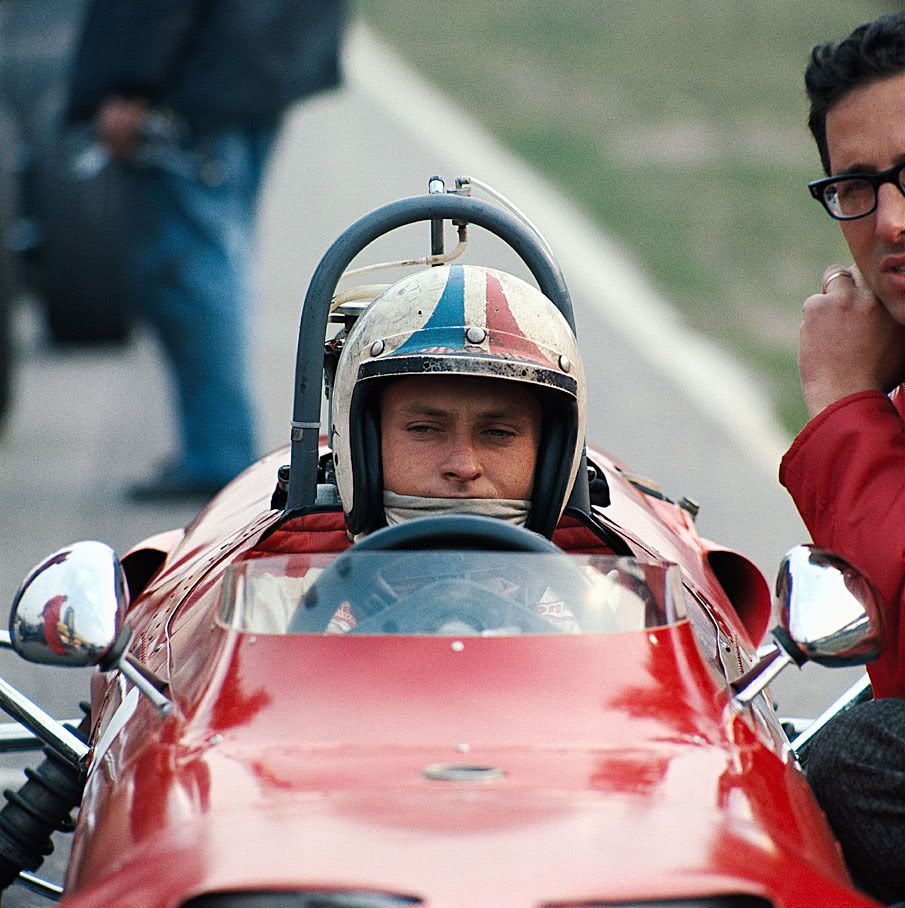
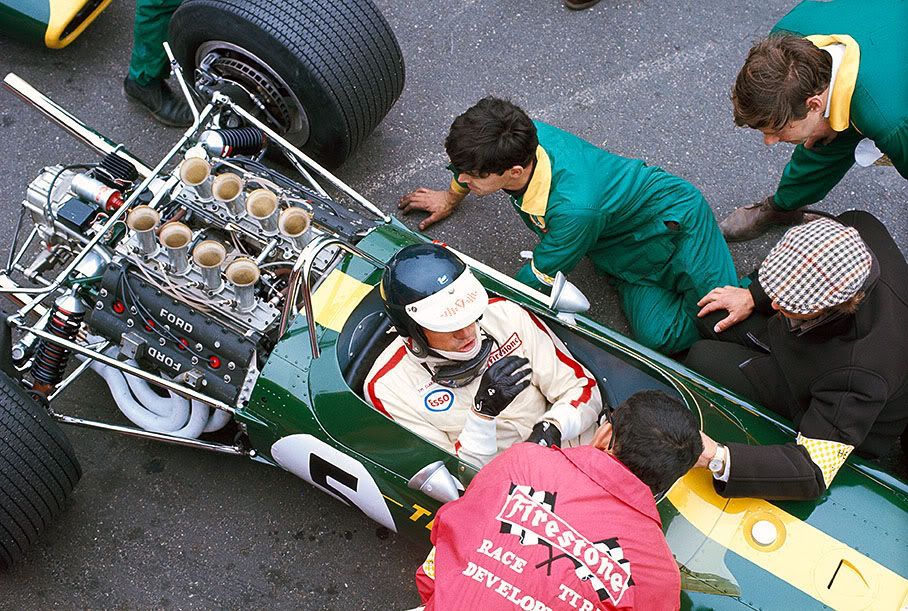
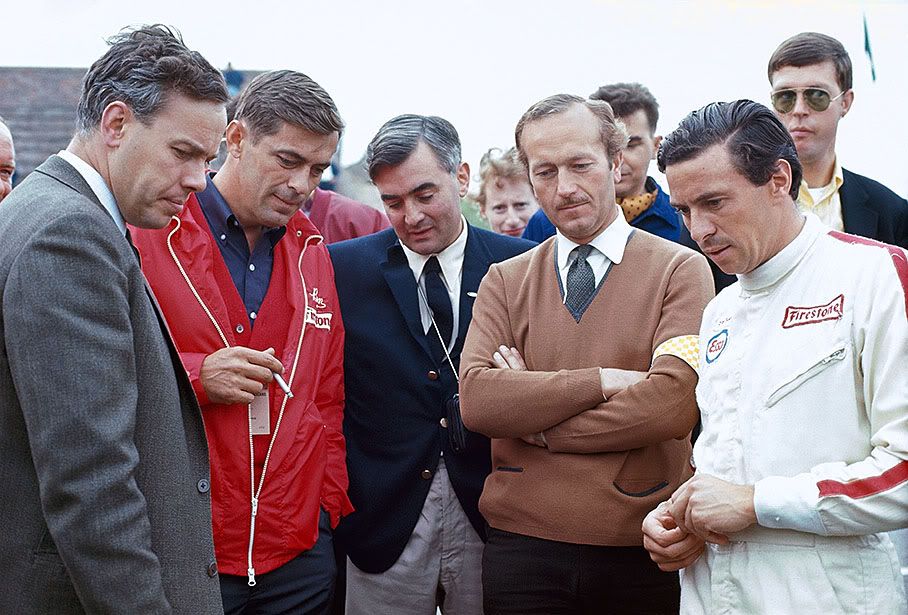
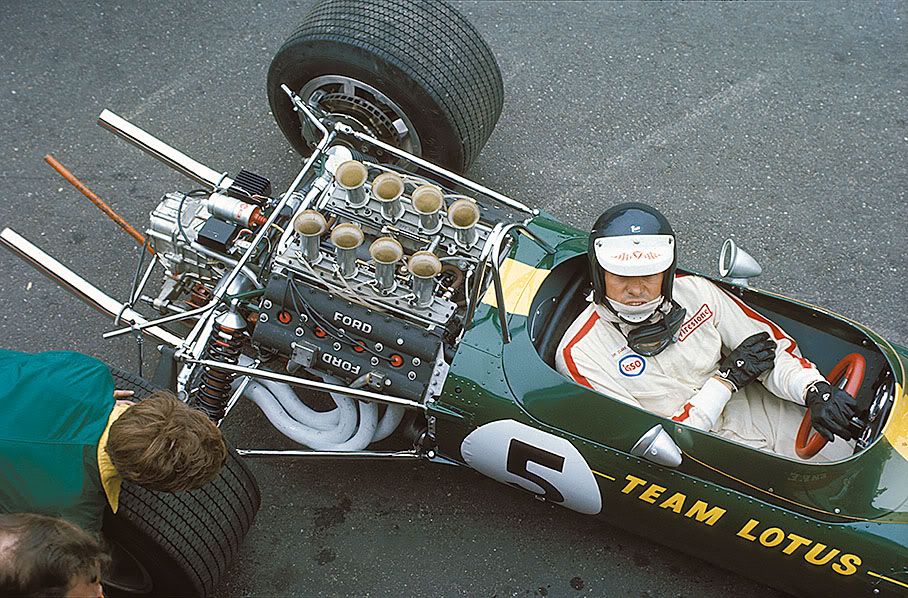
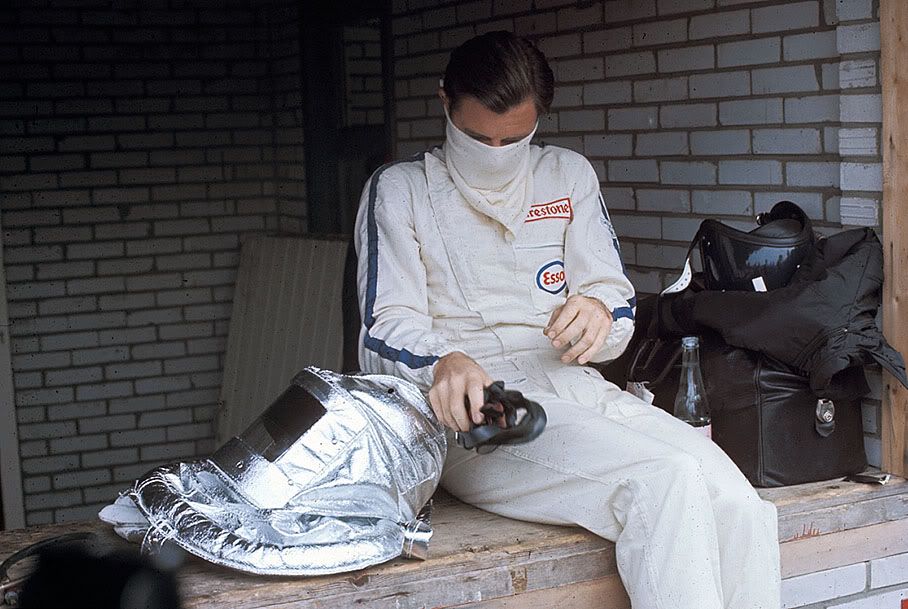
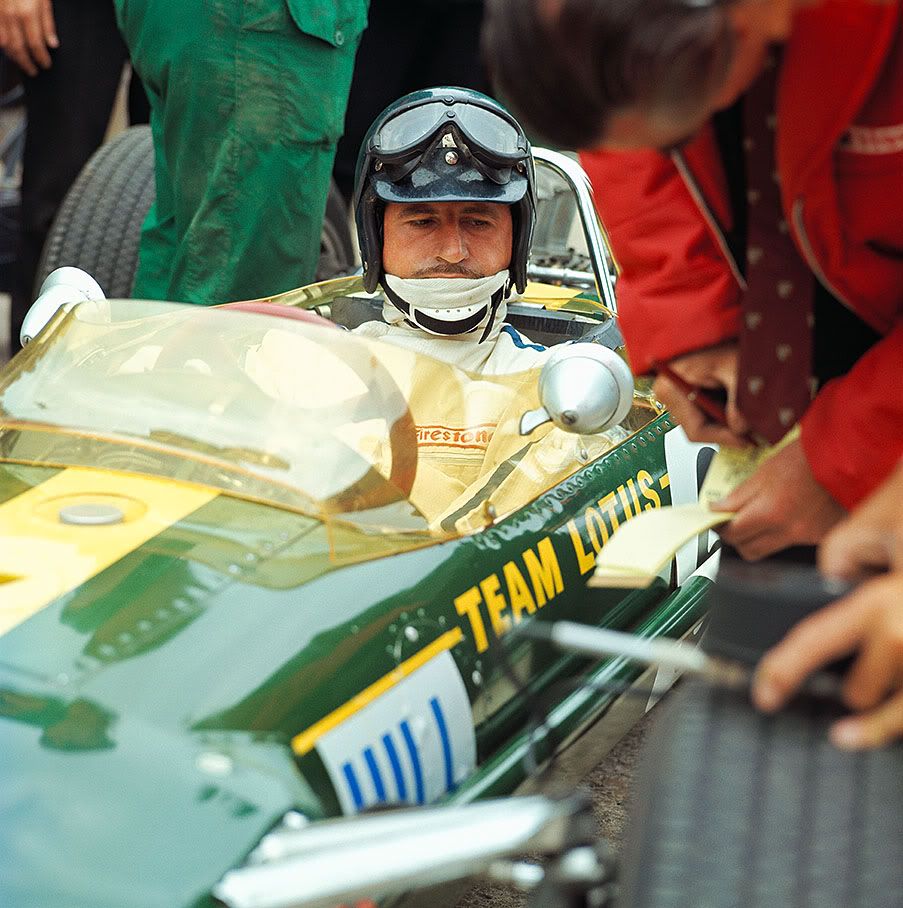
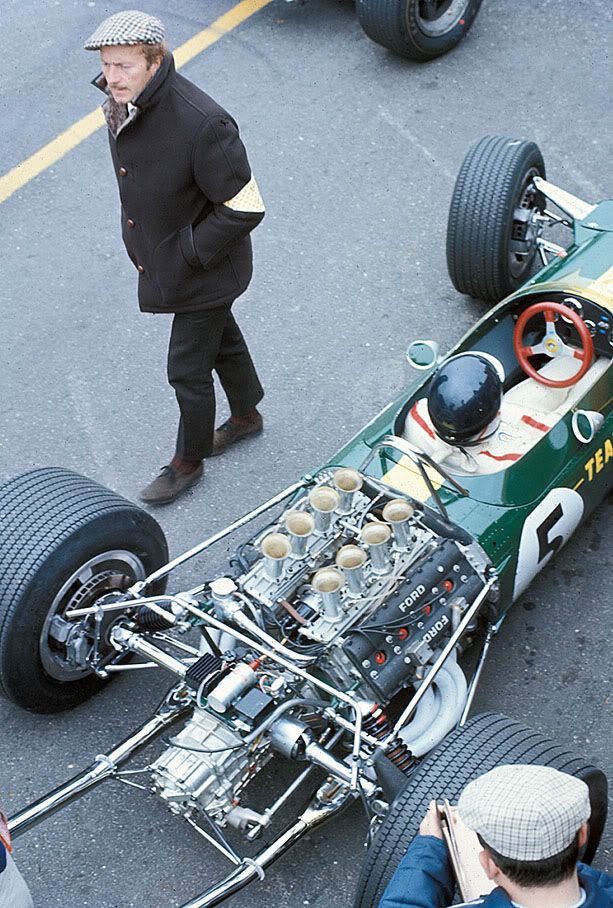
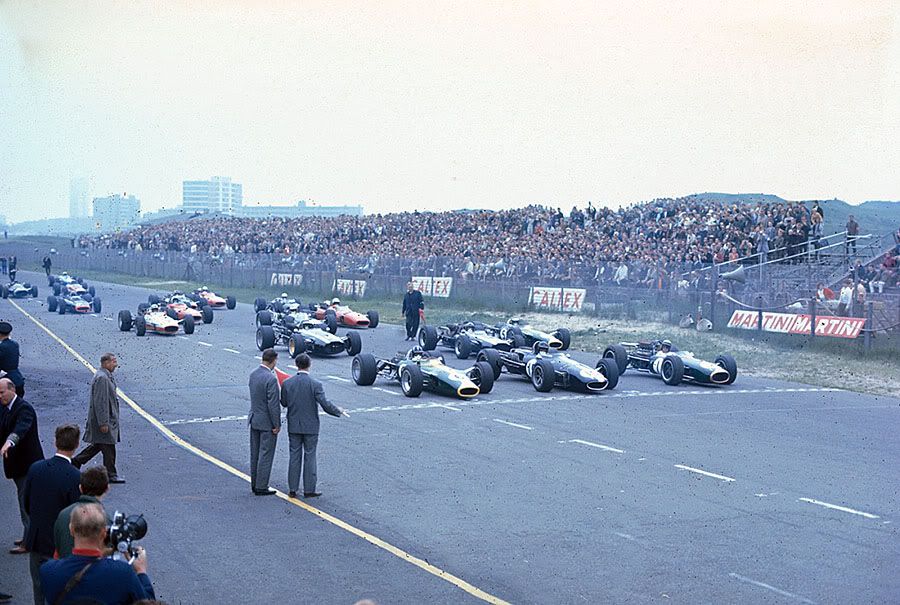

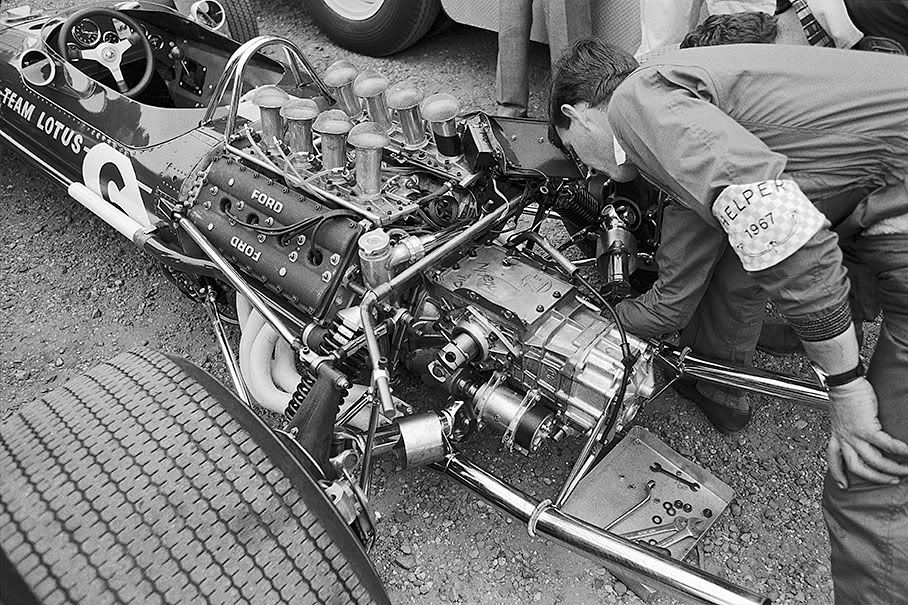
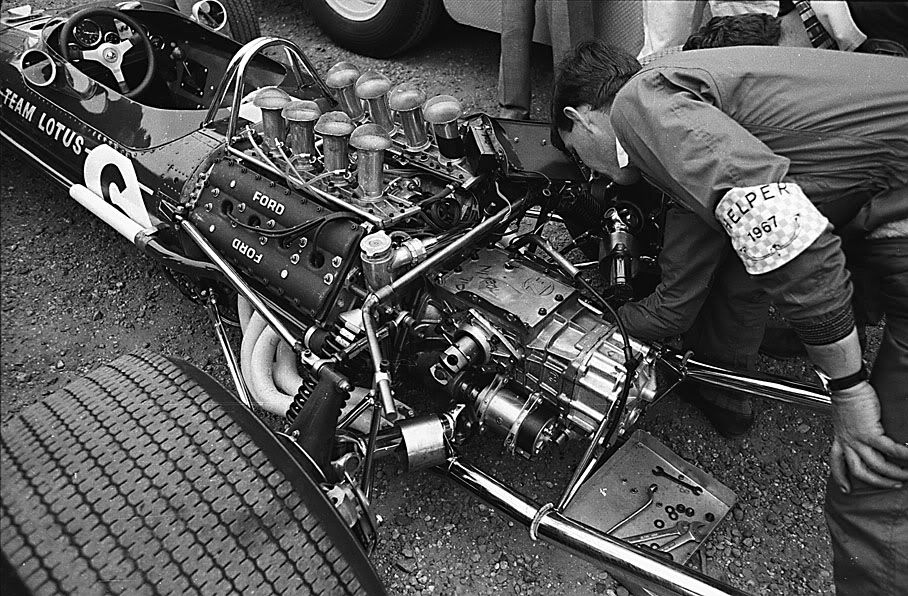
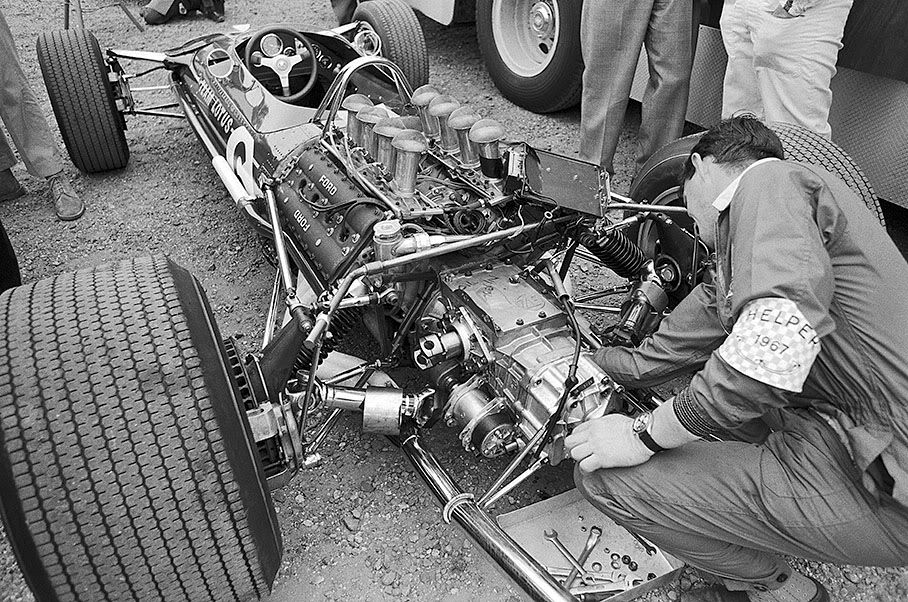
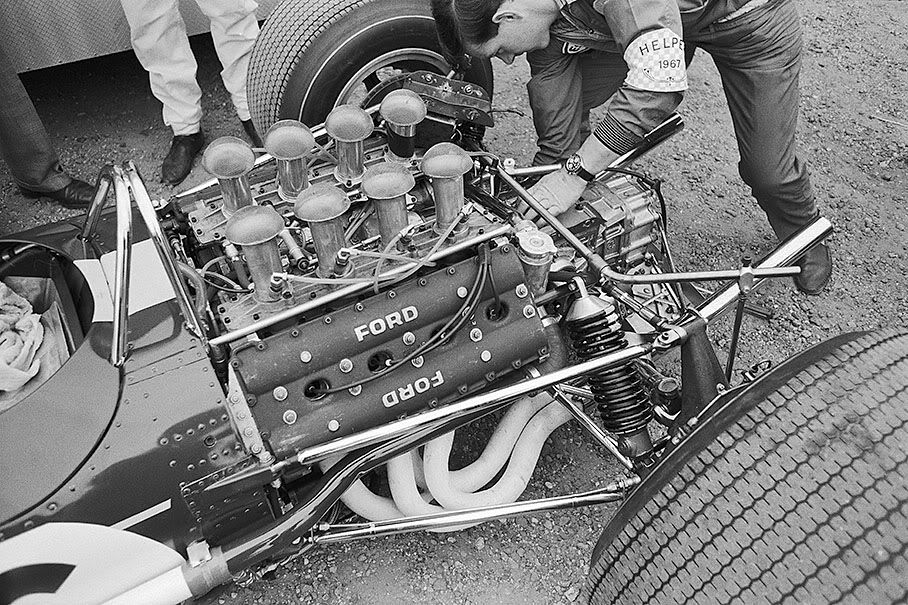

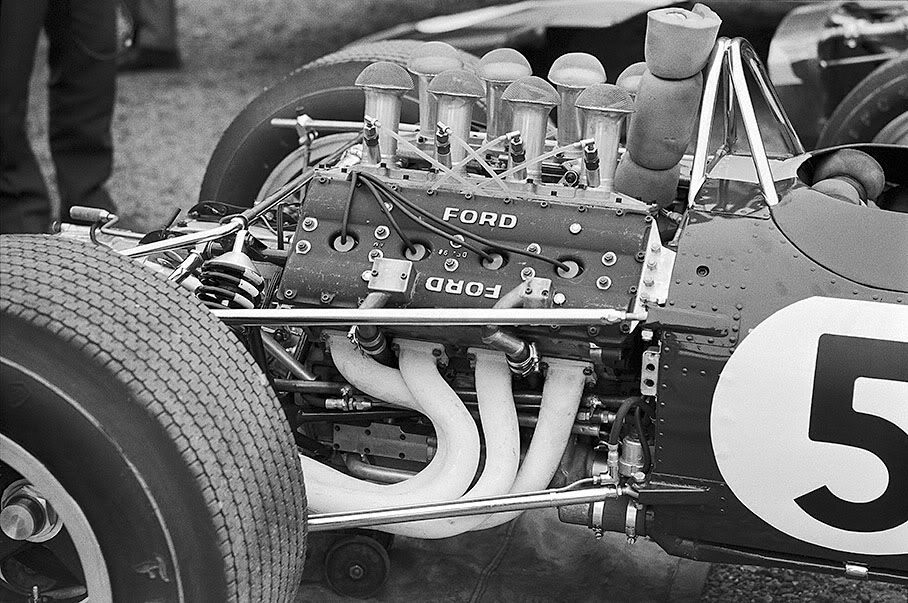
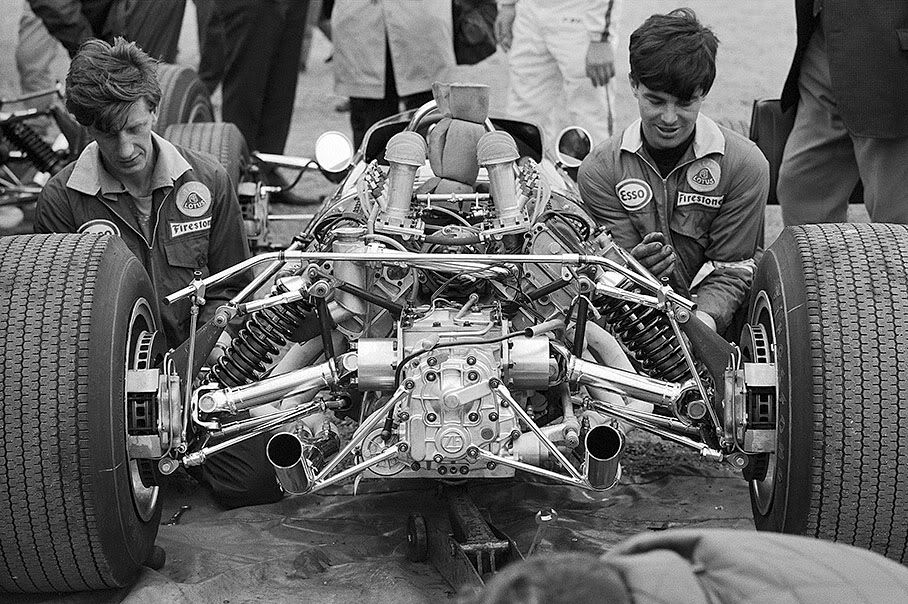
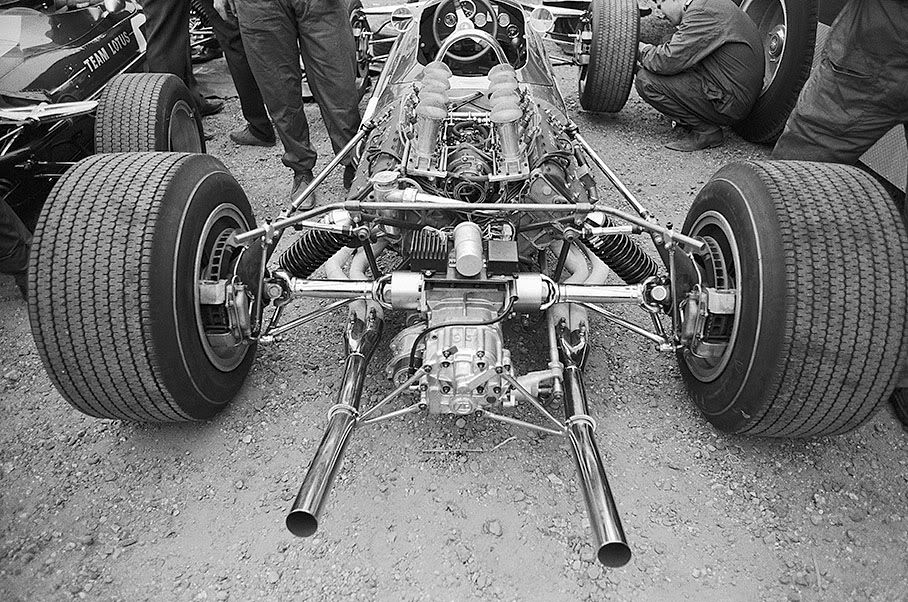
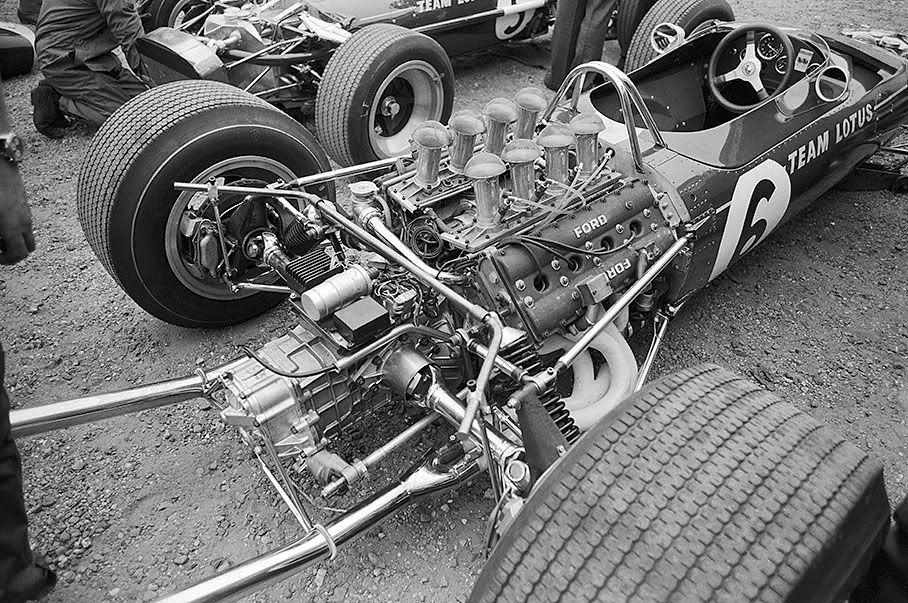


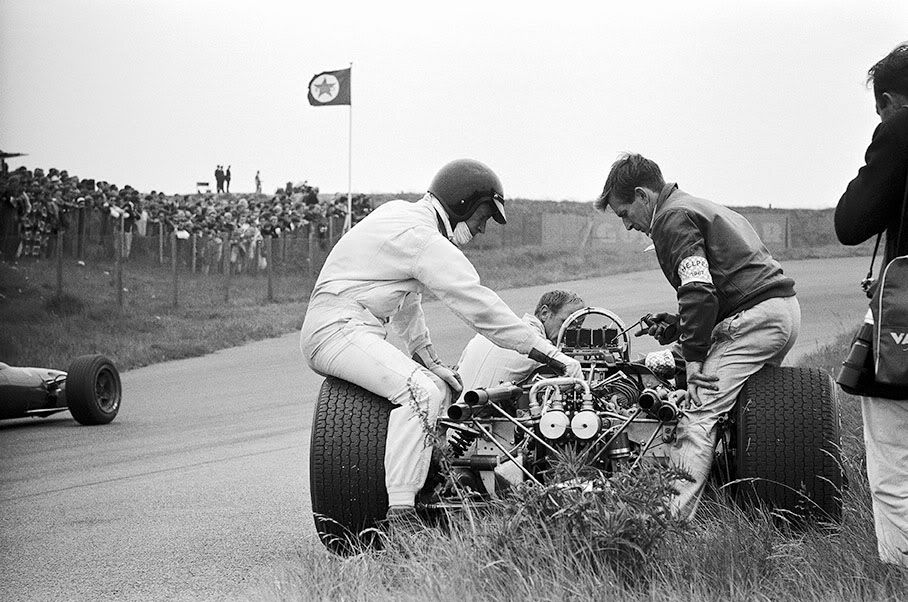
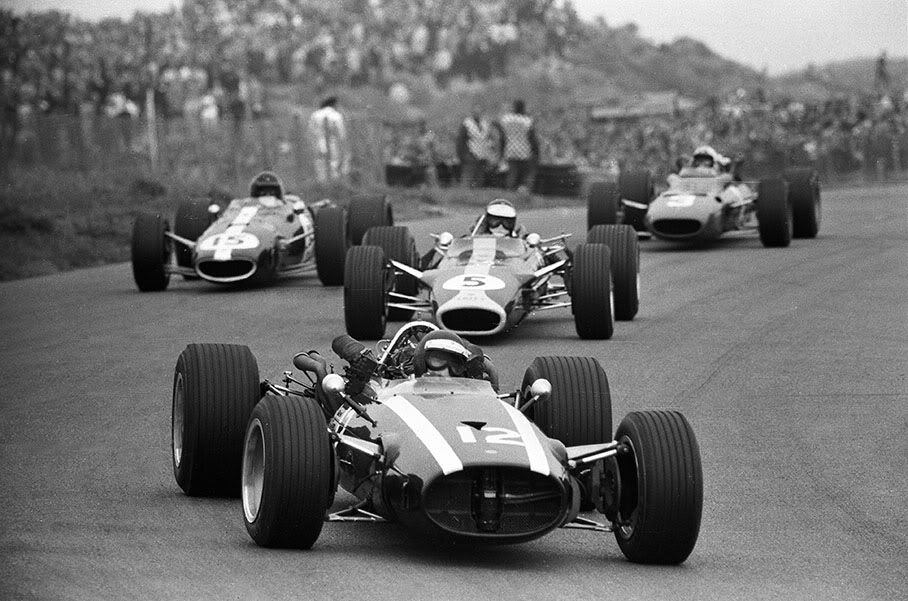
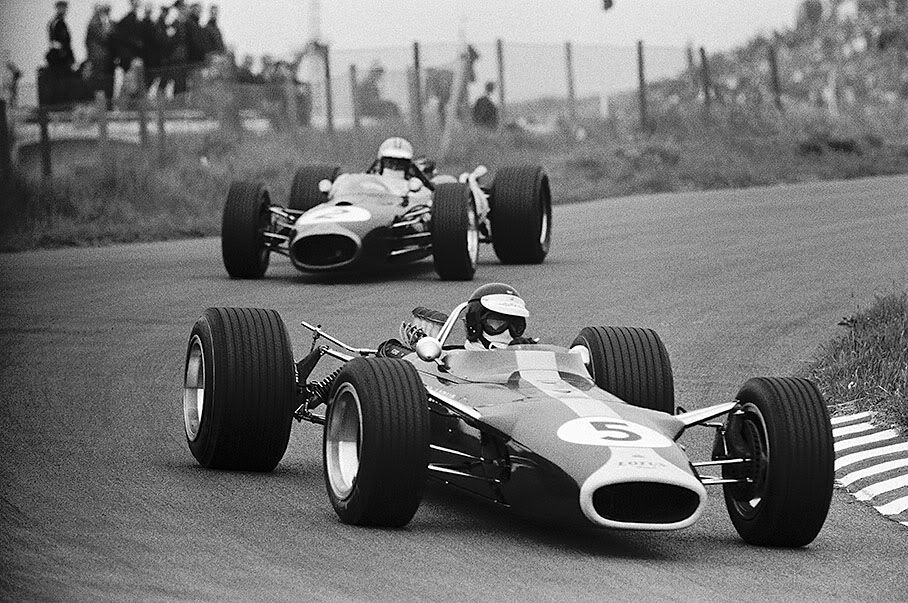
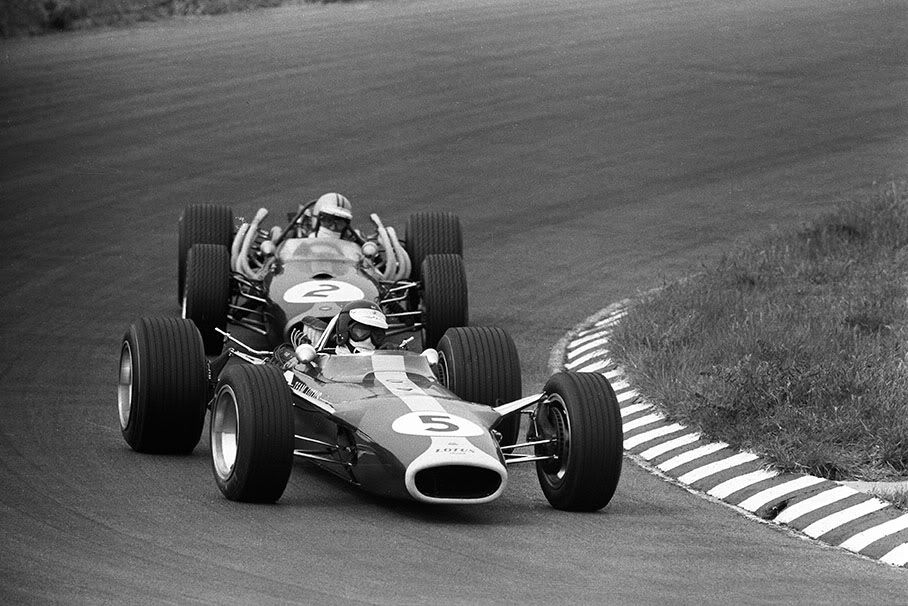



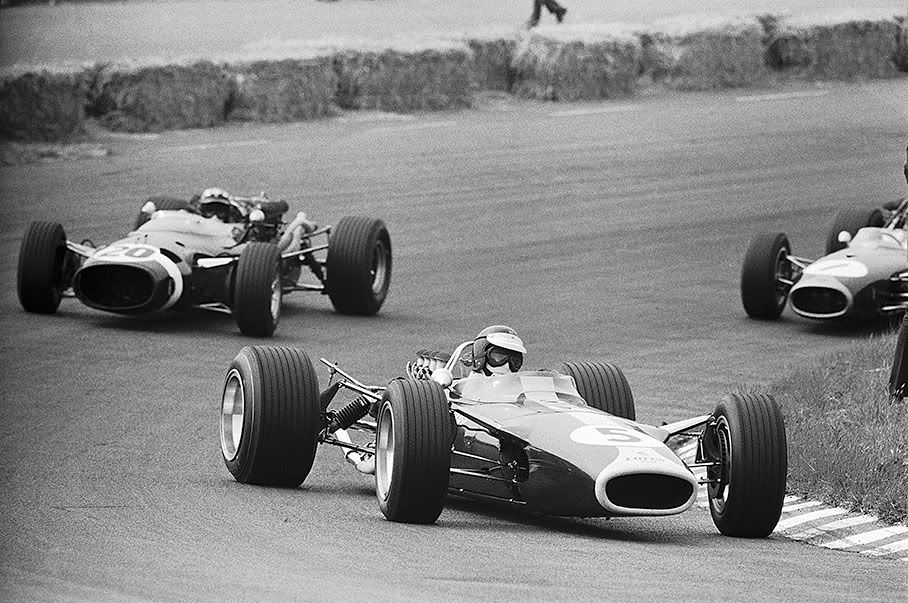
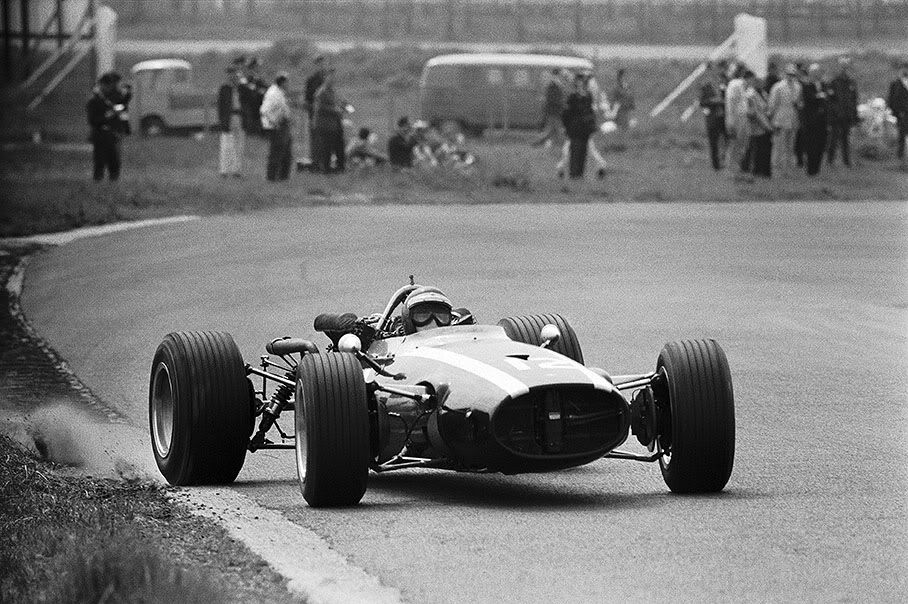
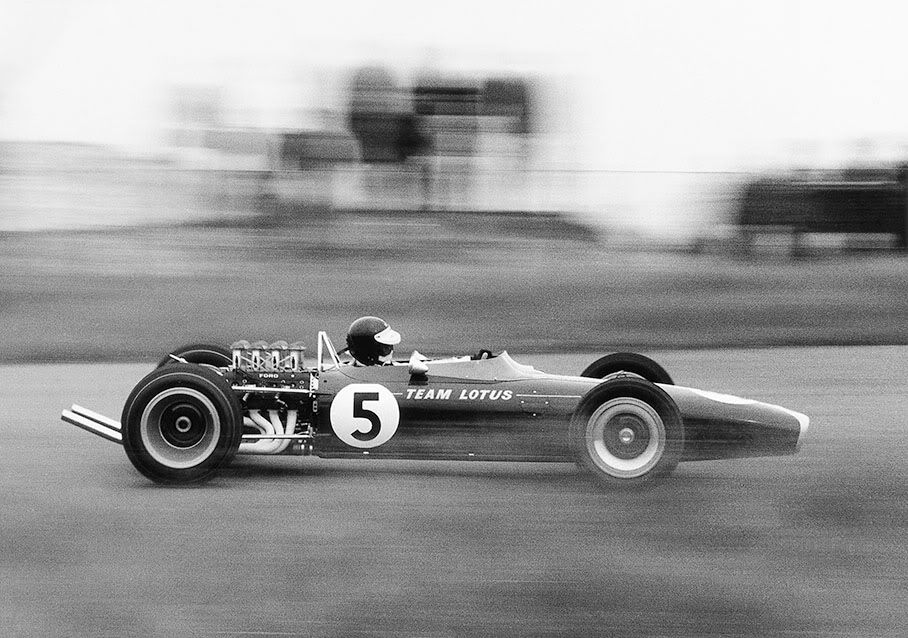
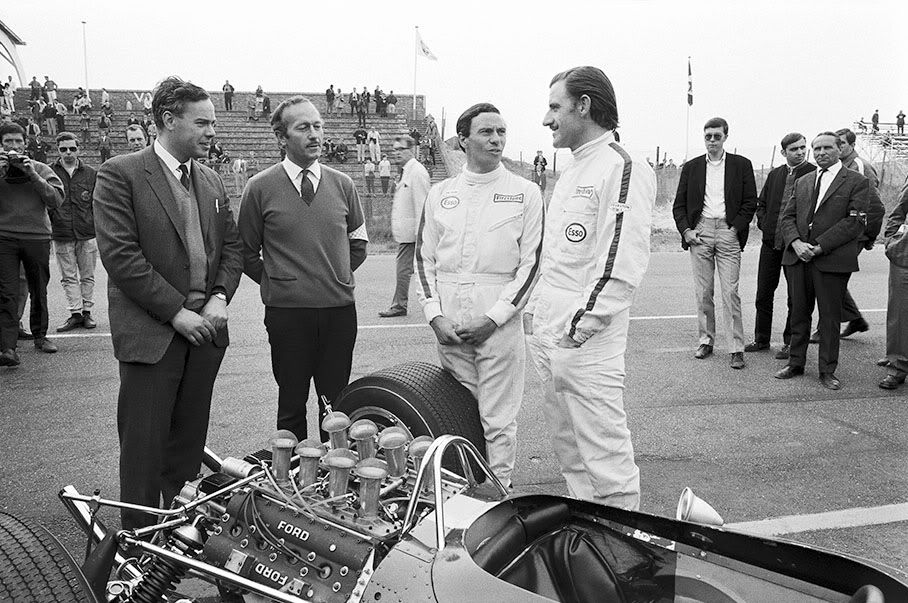
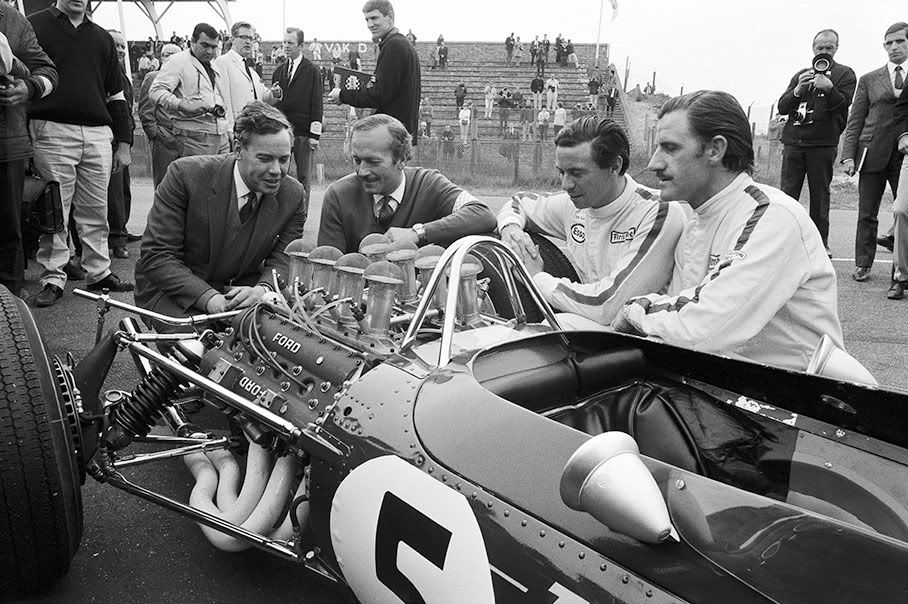
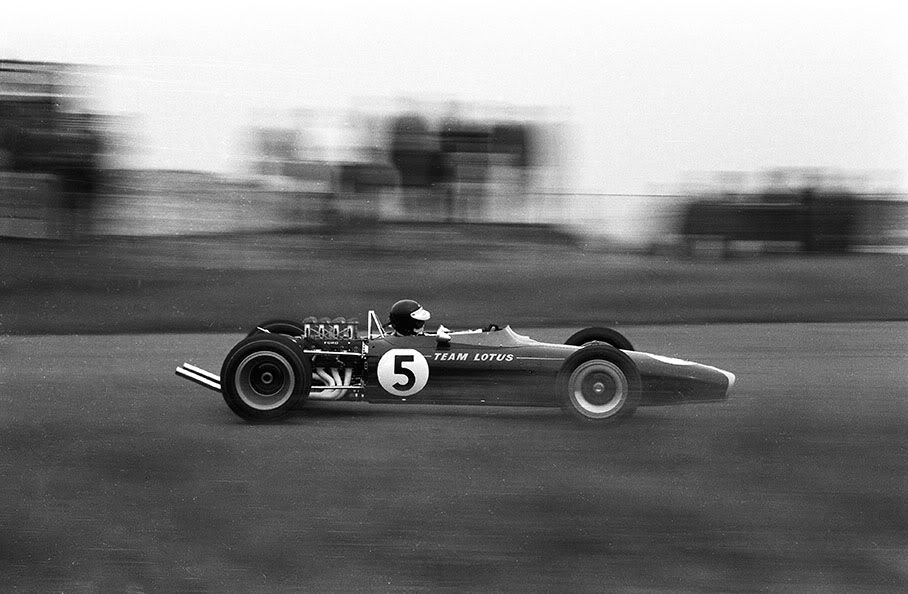
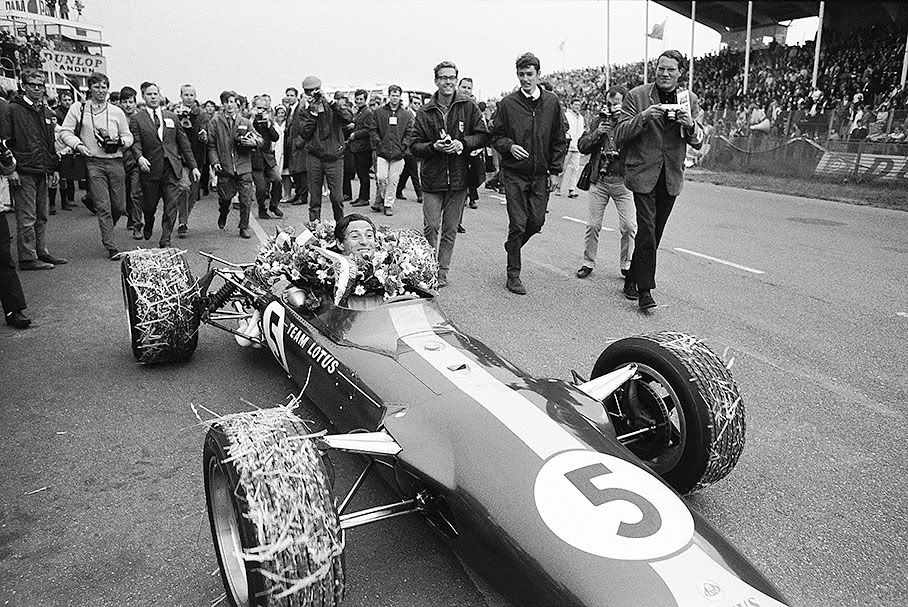
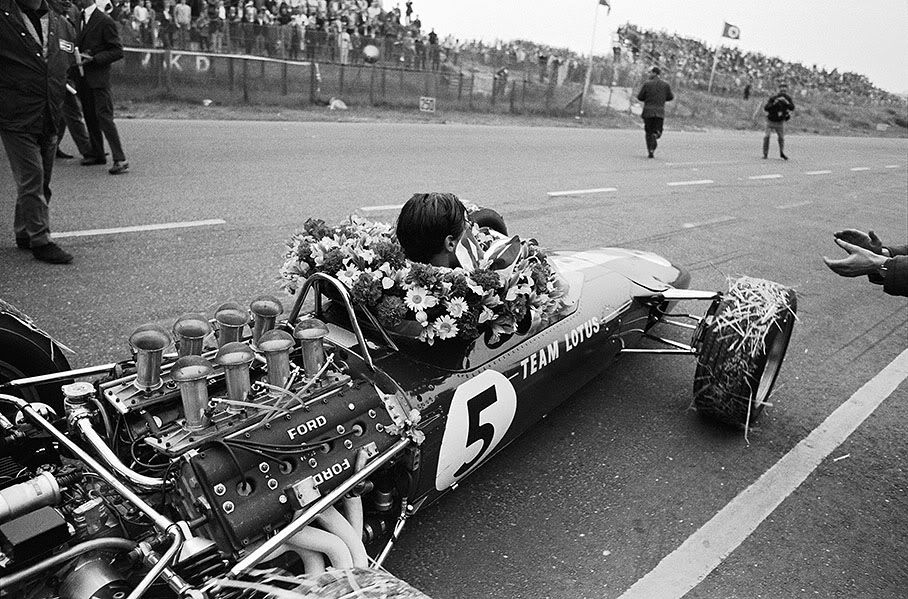
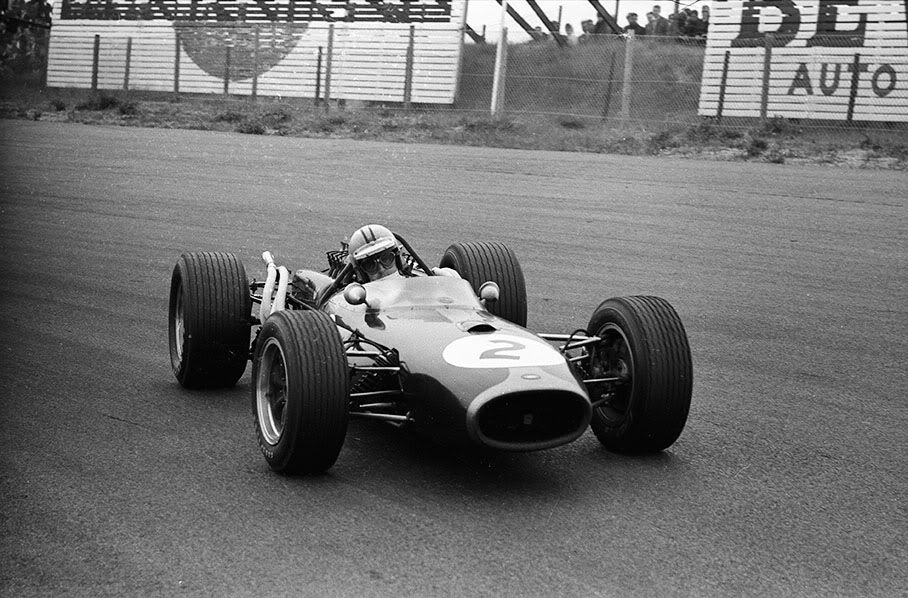

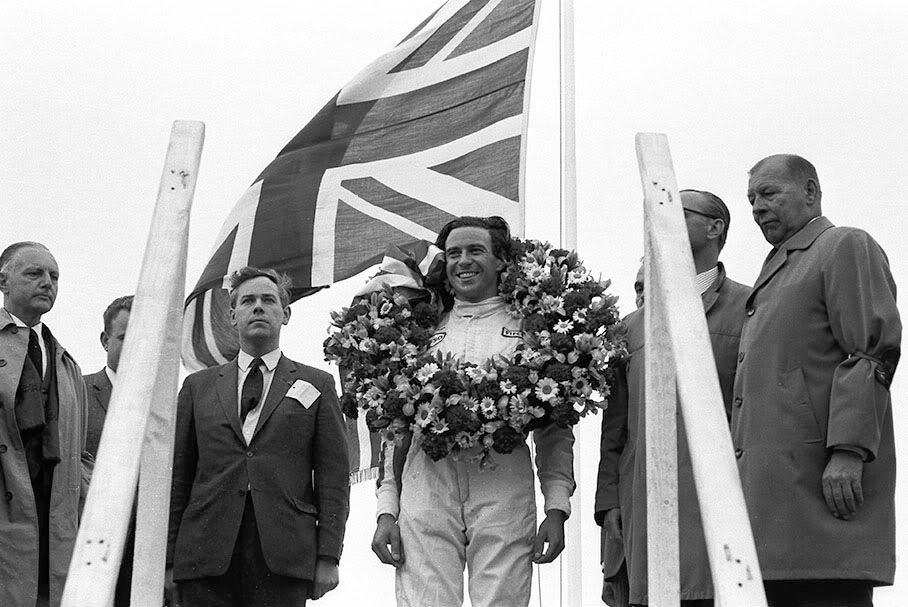
Here we go...for ratson specially, the 1967 Dutch Grand Prix at Zandvoort!








































- Joined
- Jan 24, 2001
- Posts
- 9,350
sp3ctr3
Mr. Big's Thug


- Joined
- May 13, 2011
- Posts
- 197
The Era of Real Men. The Lotus 49 is one of my favorite F1 cars. I can't imagine how frigthening it must have been going 300+ km/h in a cigar with no slicks and no downforce. Graham Hill, a true gentlemen too, not like those whiney cunts that are in F1 now.
I used to be into simracing quite a bit, and still keep an eye on things, as I hope to get back in once I get more room for a racing setup. In iRacing they are currently working on a Lotus 49 that's supposed to come out sometime this year. Also saw a trailer for rFactor 2 which had 60's open wheelers too.
I used to be into simracing quite a bit, and still keep an eye on things, as I hope to get back in once I get more room for a racing setup. In iRacing they are currently working on a Lotus 49 that's supposed to come out sometime this year. Also saw a trailer for rFactor 2 which had 60's open wheelers too.
- Joined
- Jan 24, 2001
- Posts
- 9,350
Here's a couple of random pictures for the moment...

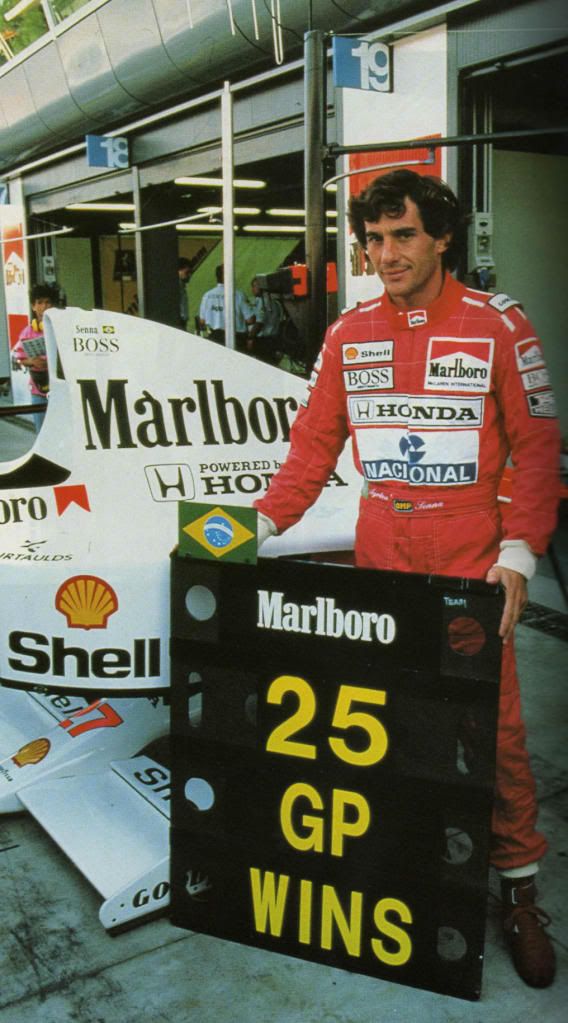






- Joined
- Jan 24, 2001
- Posts
- 9,350
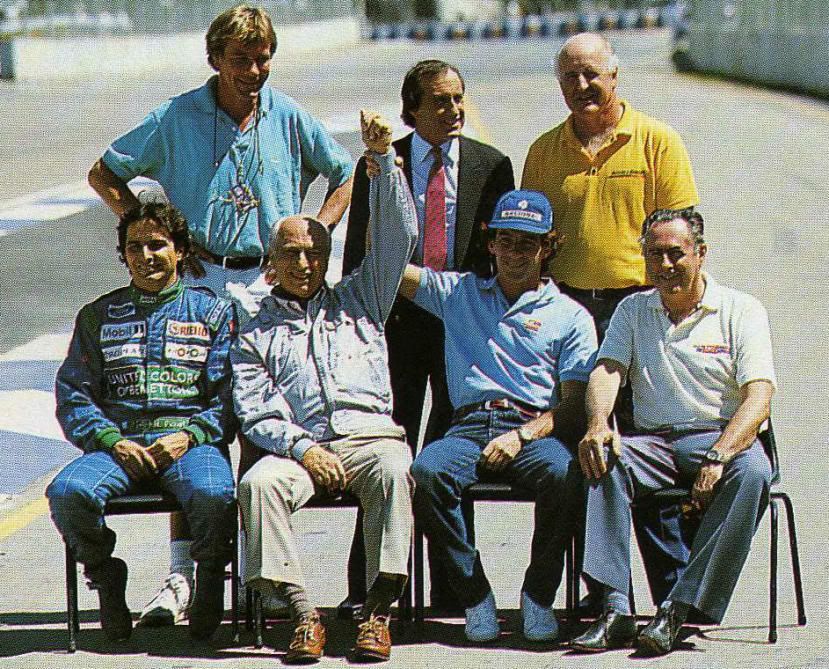
Senna and the great Juan Manuel Fangio.
- Joined
- Jan 24, 2001
- Posts
- 9,350
I uploaded this on YouTube just for those who have never seen the extended onboard camera during Senna's final lap at the 1994 San Marino GP.
I ended it right before his accident.
I ended it right before his accident.
- Joined
- Jan 24, 2001
- Posts
- 9,350
I uploaded this on YouTube just before for everyone who happens to be following this thread.
Full footage of the 1984 Monaco Grand Prix. This was a classic race...heavy rain...it marked Ayrton Senna announcing to the racing world that he had finally arrived.
Enjoy everyone.
Full footage of the 1984 Monaco Grand Prix. This was a classic race...heavy rain...it marked Ayrton Senna announcing to the racing world that he had finally arrived.
Enjoy everyone.


